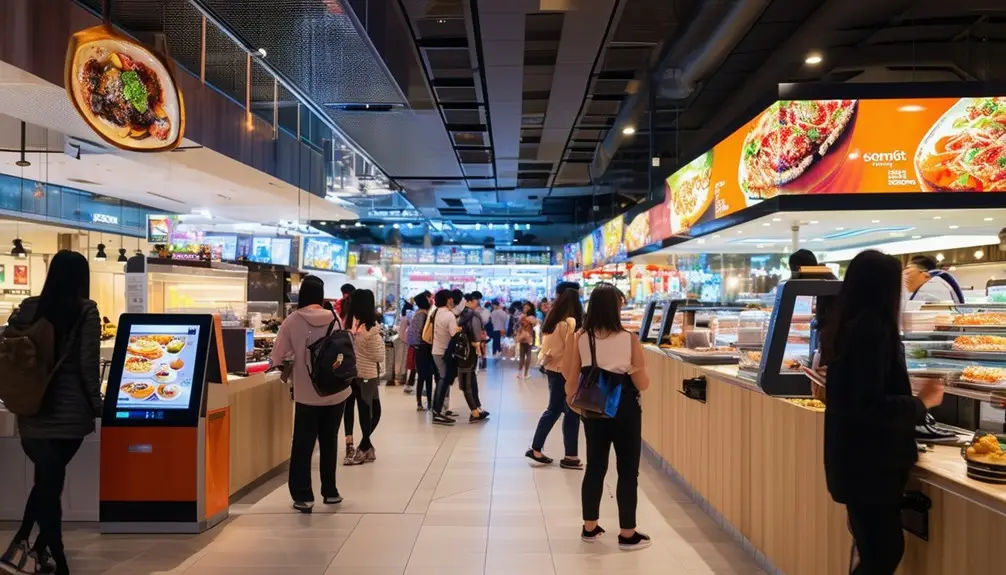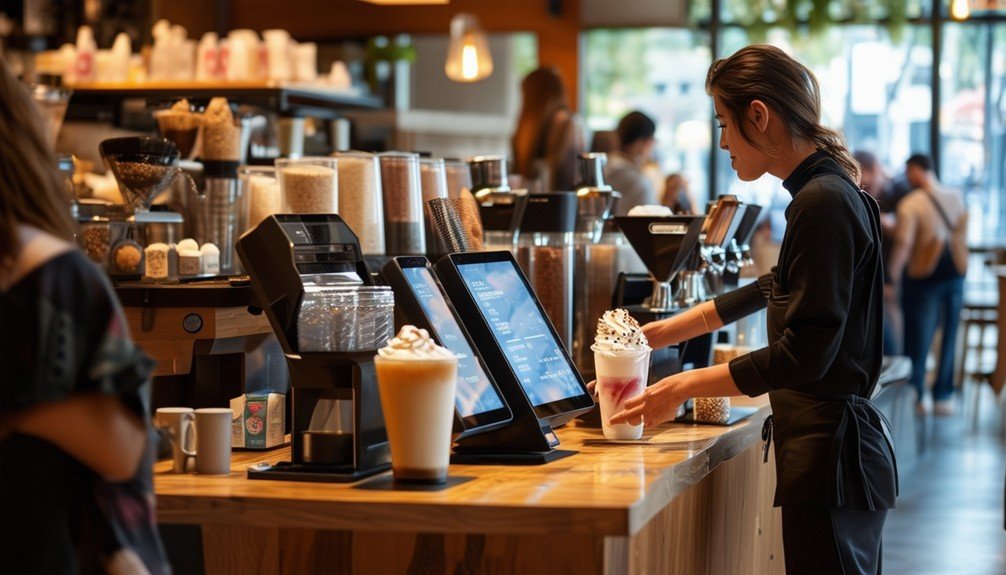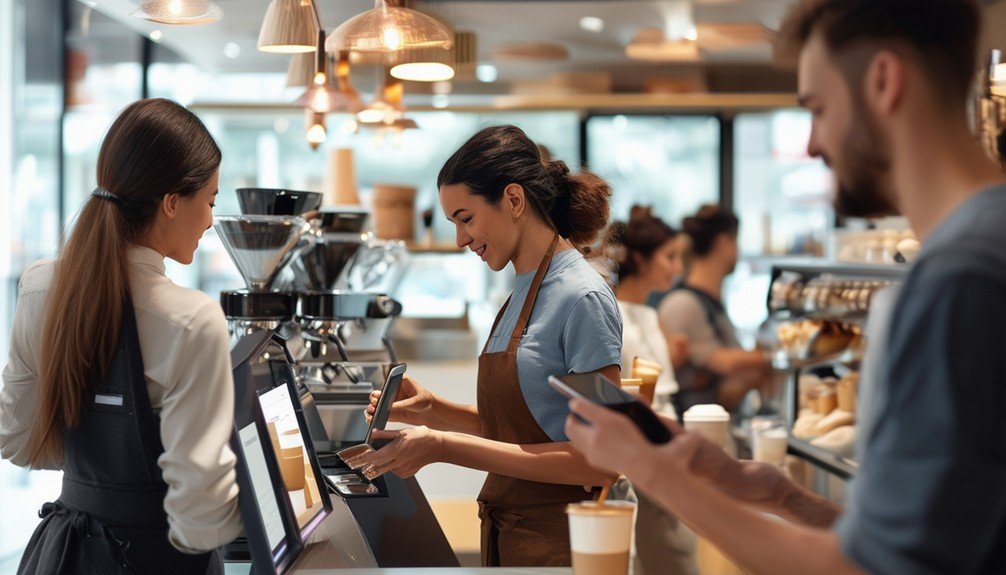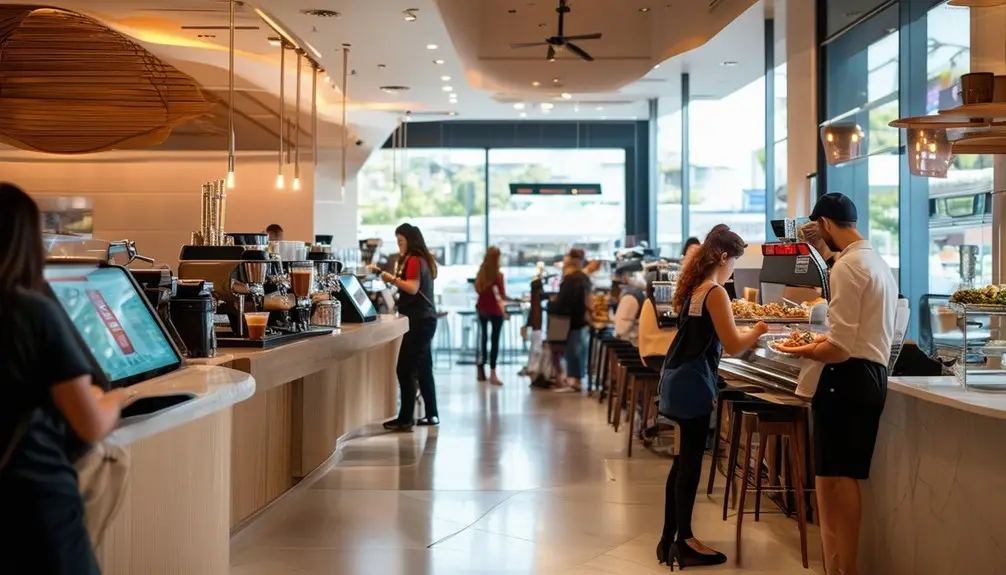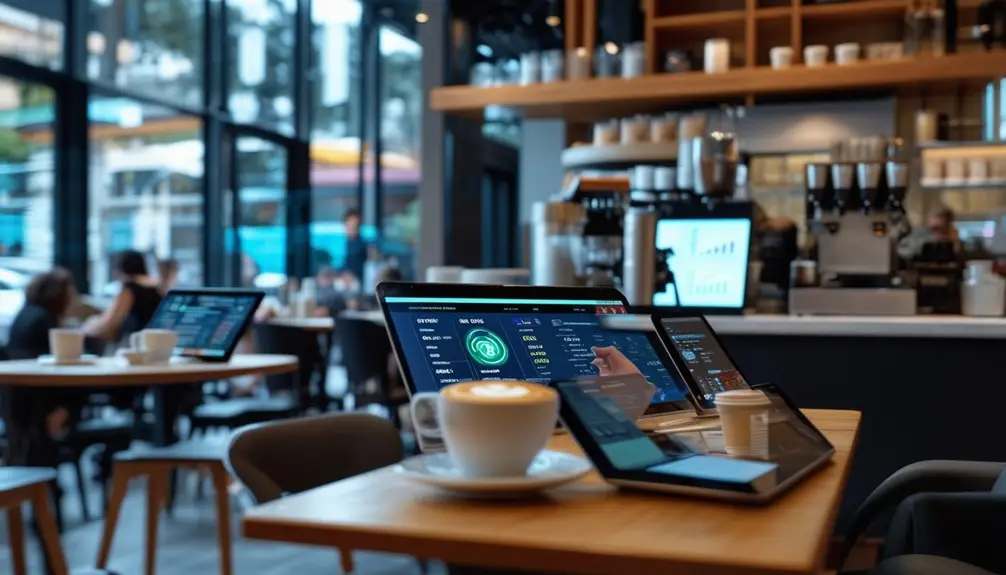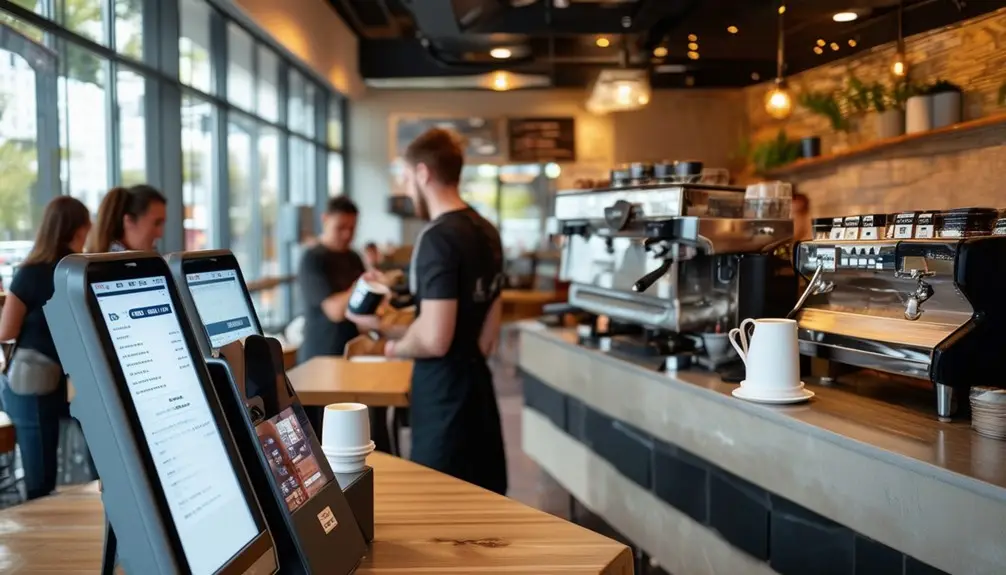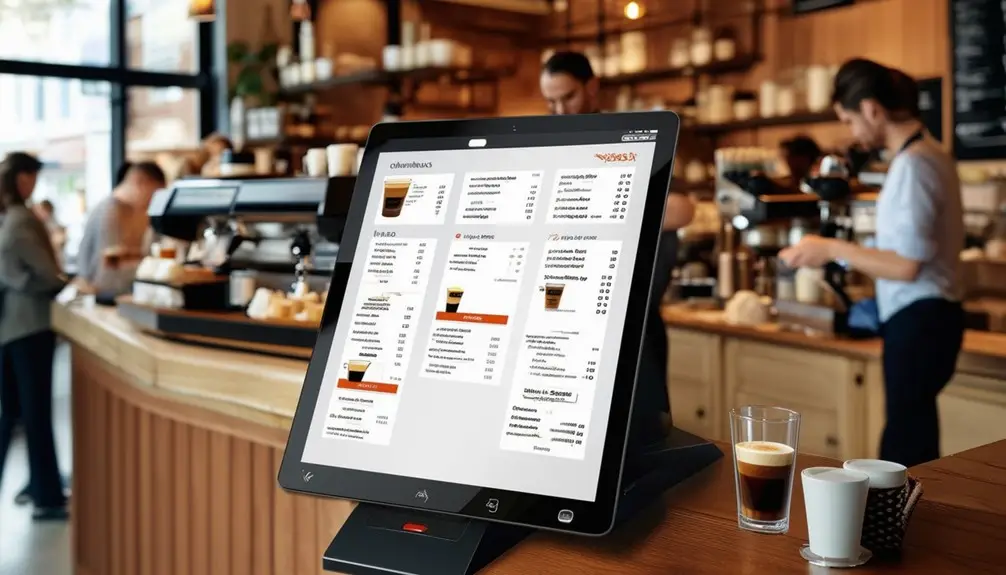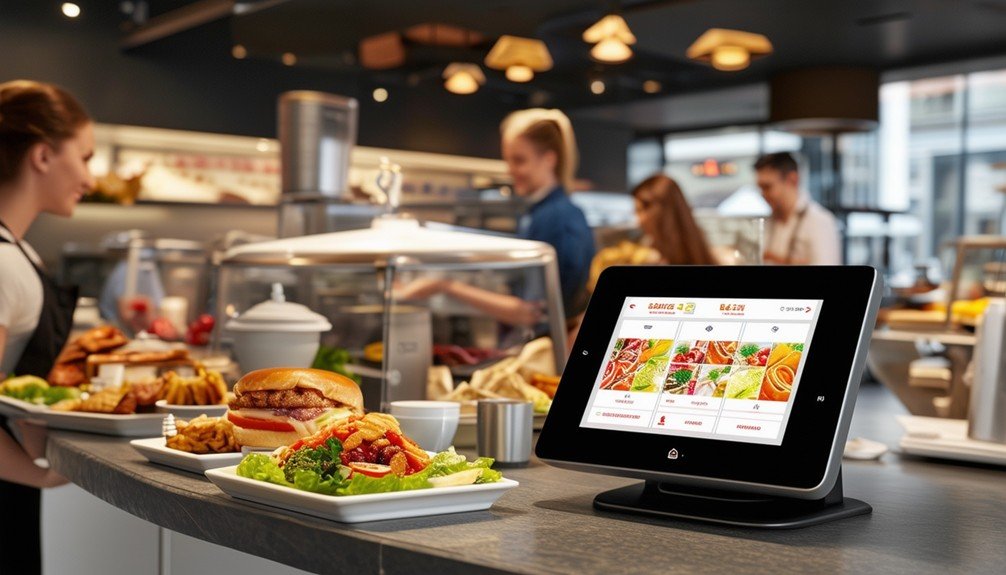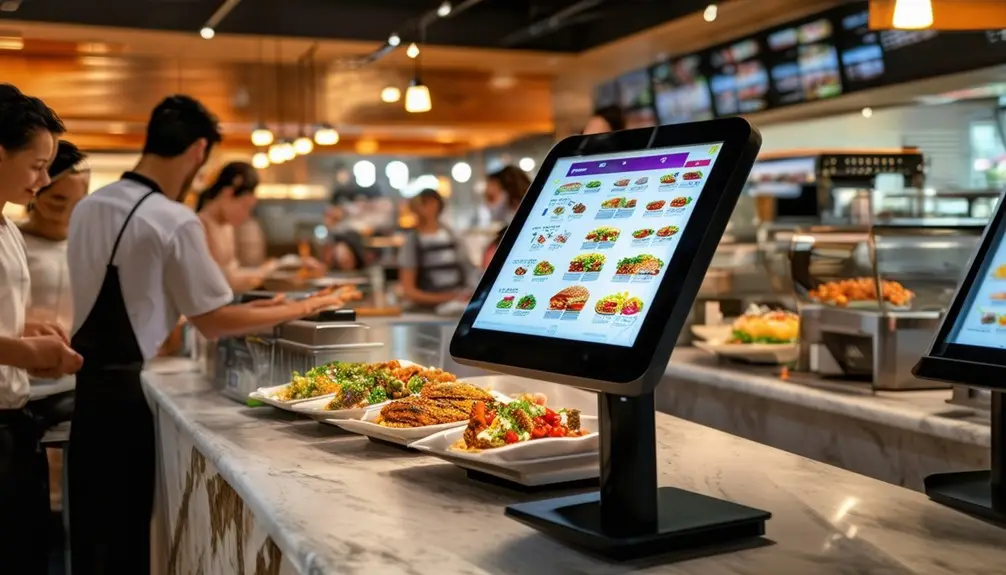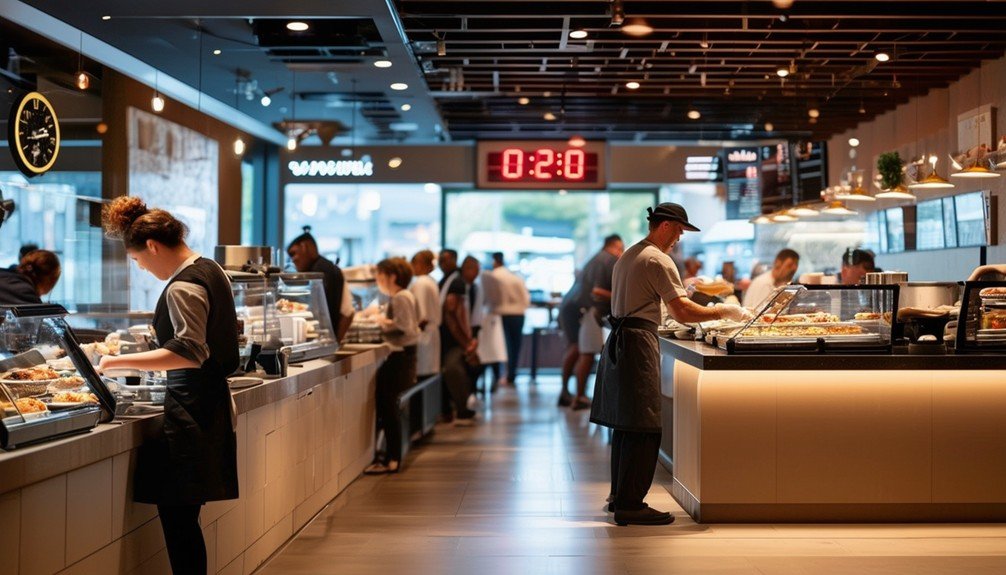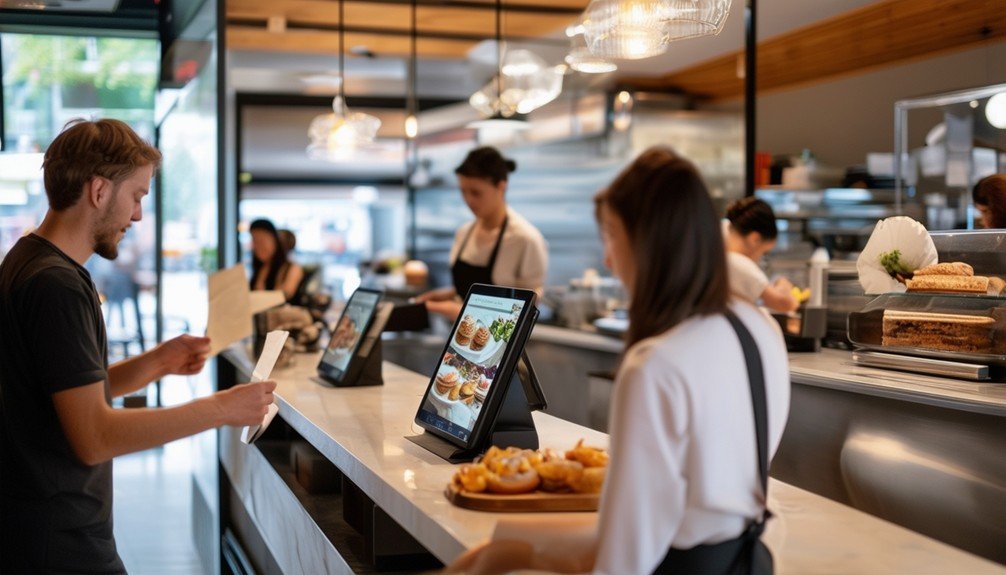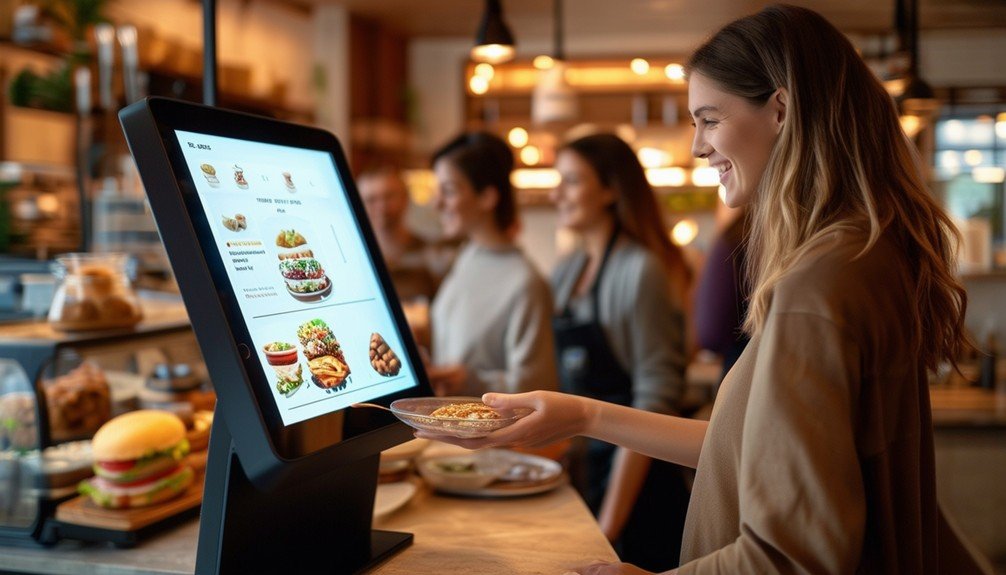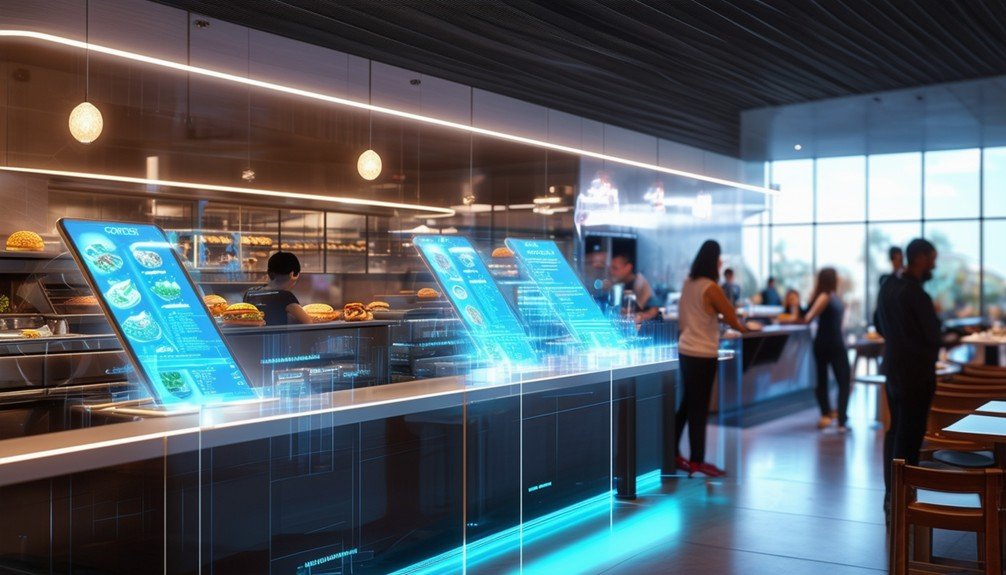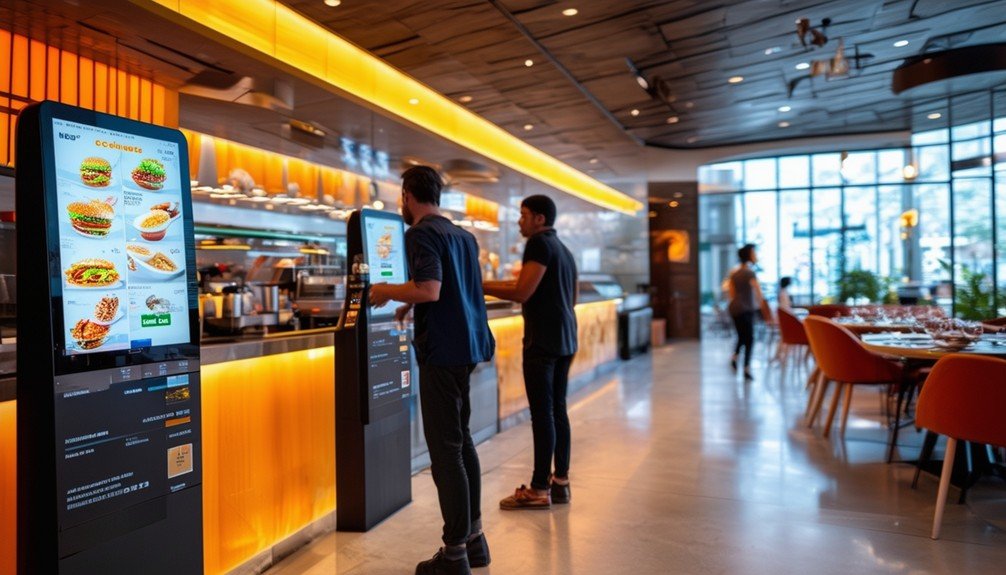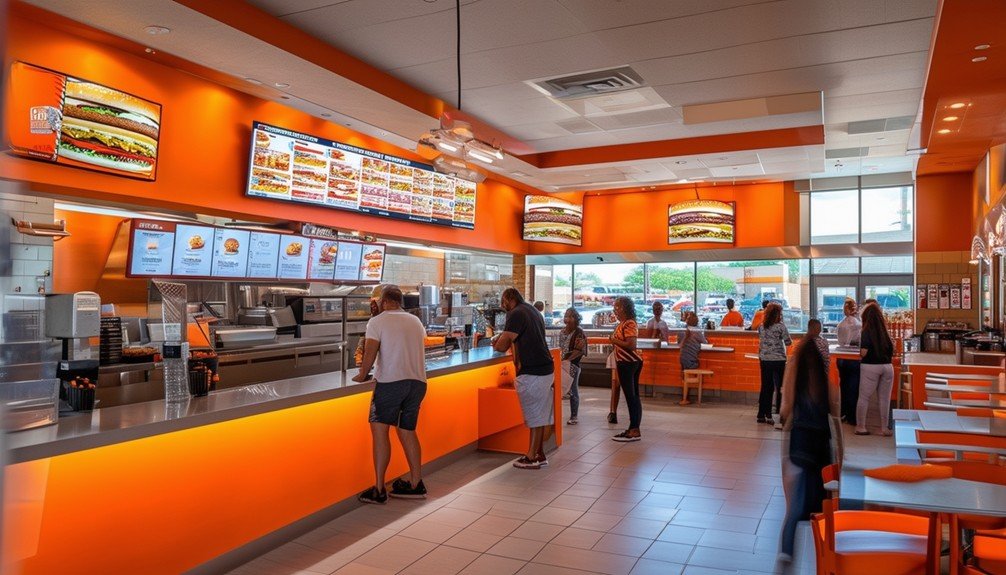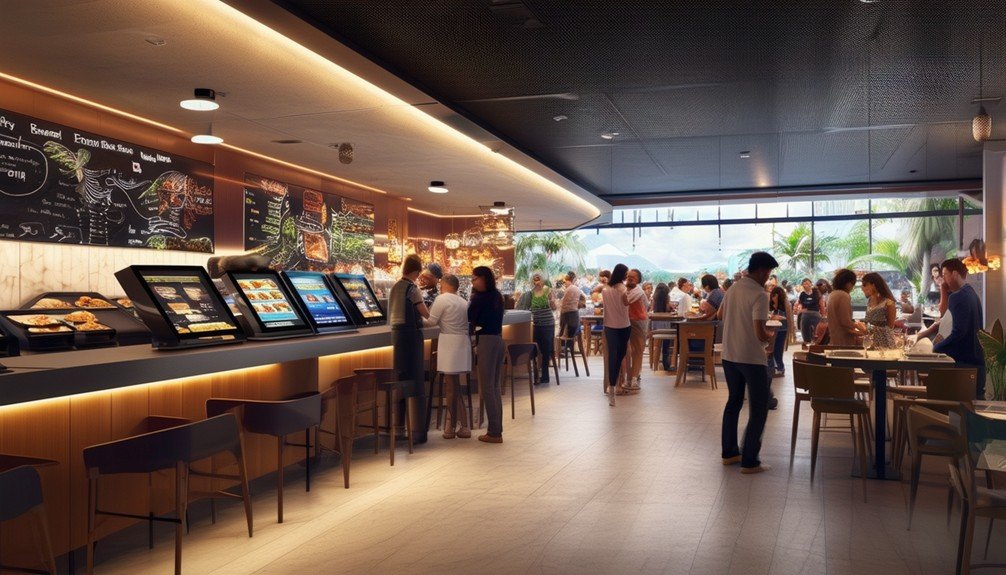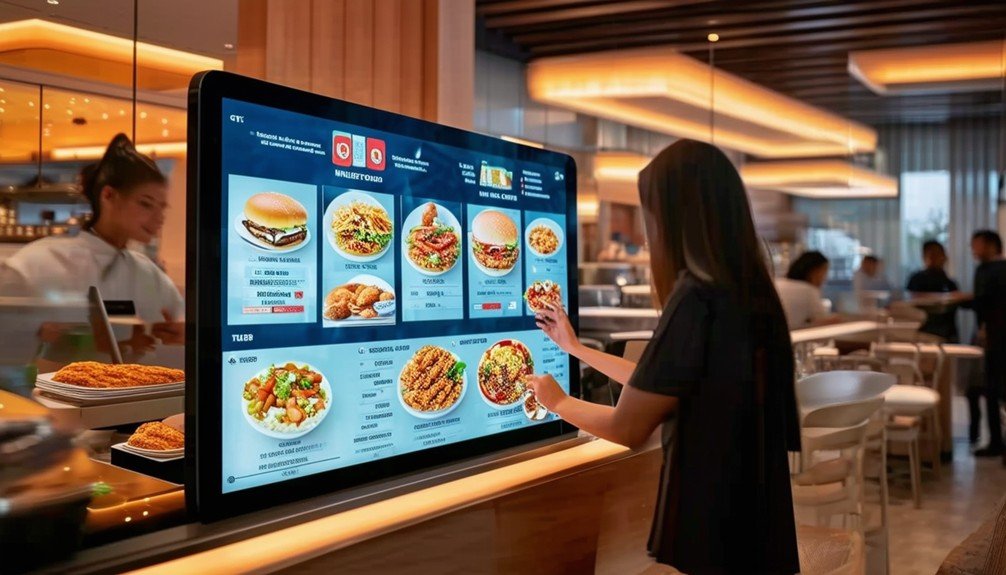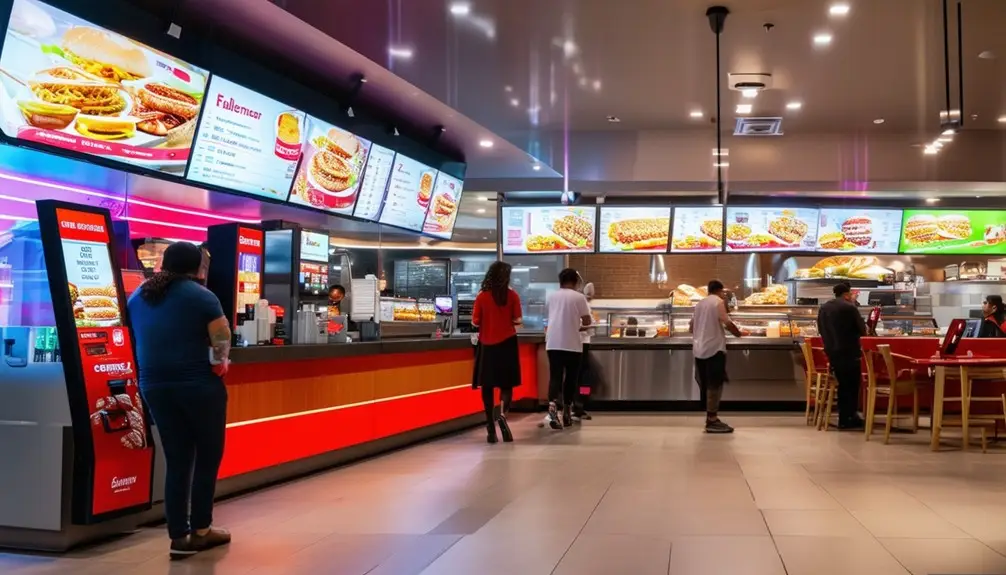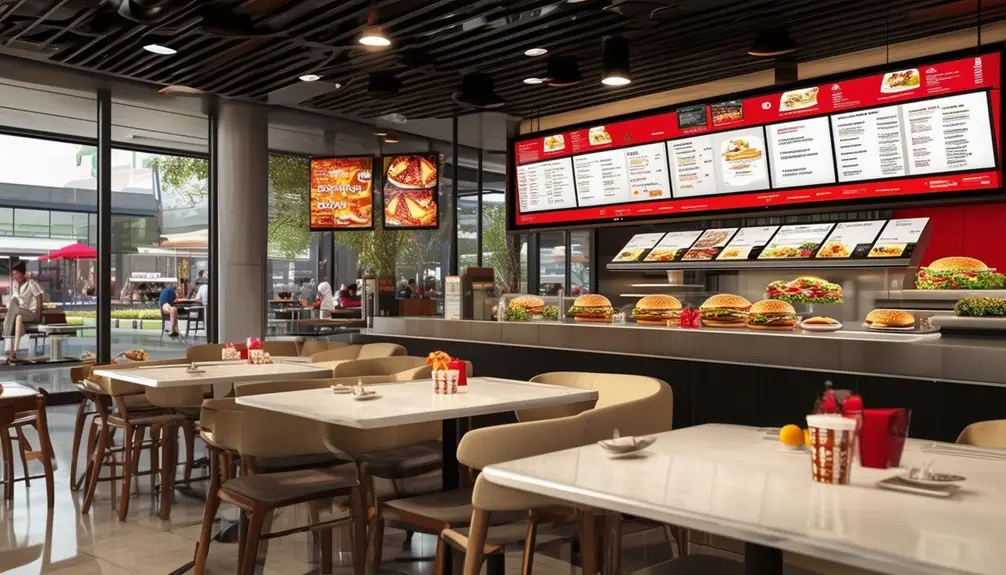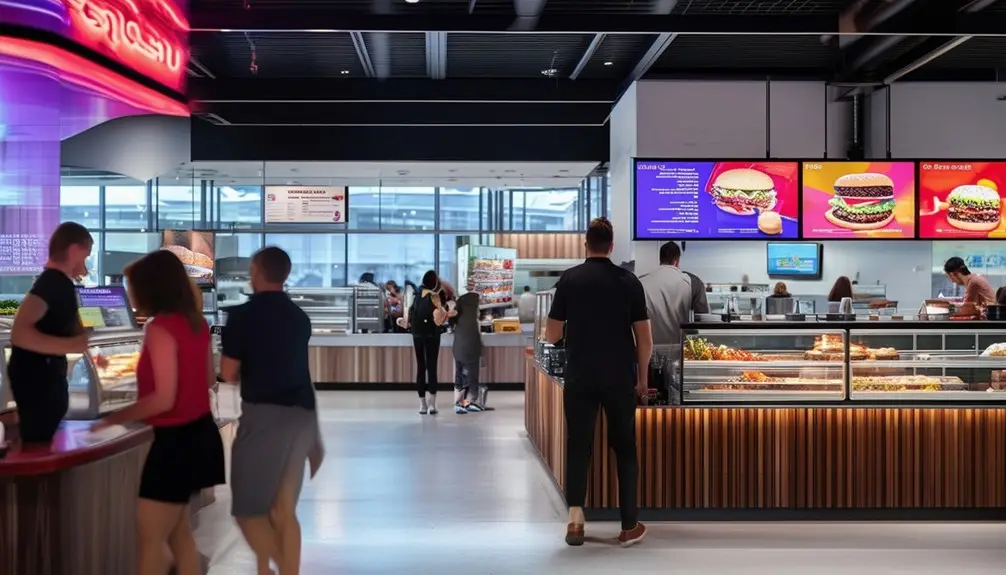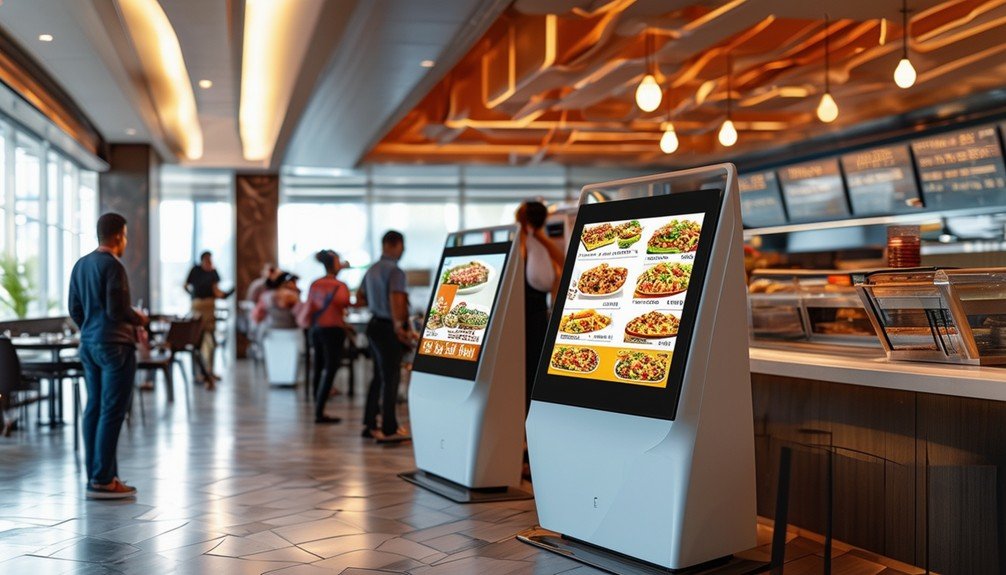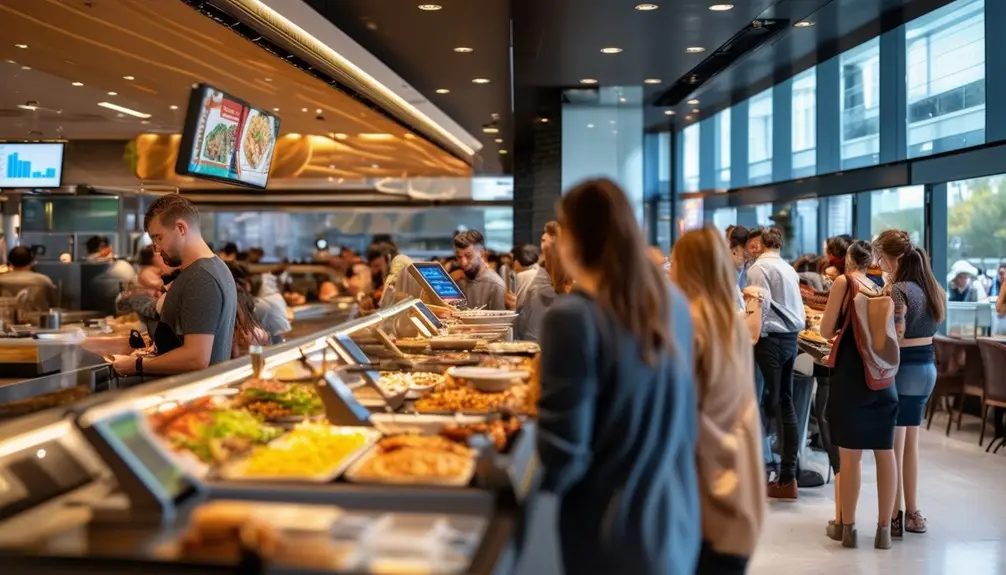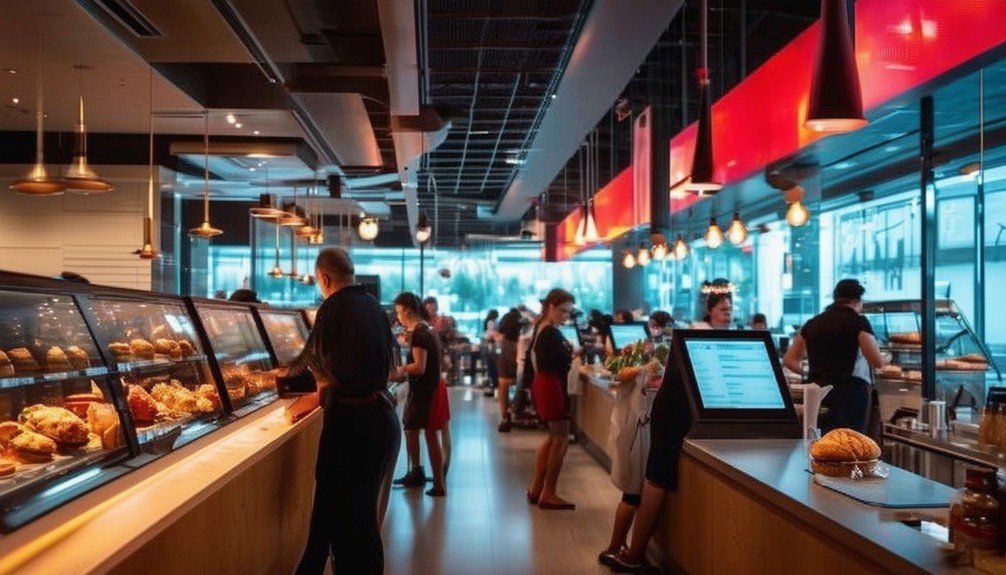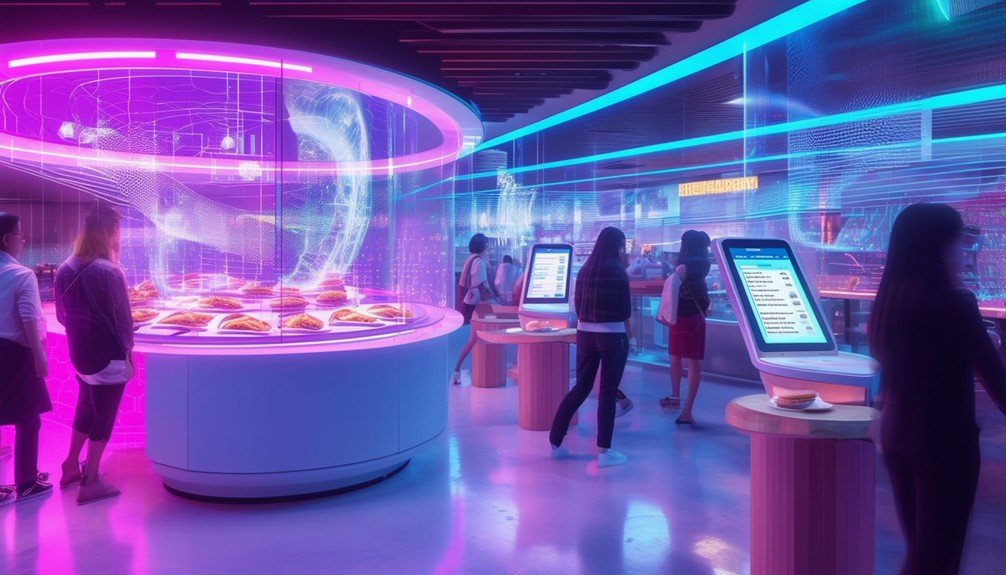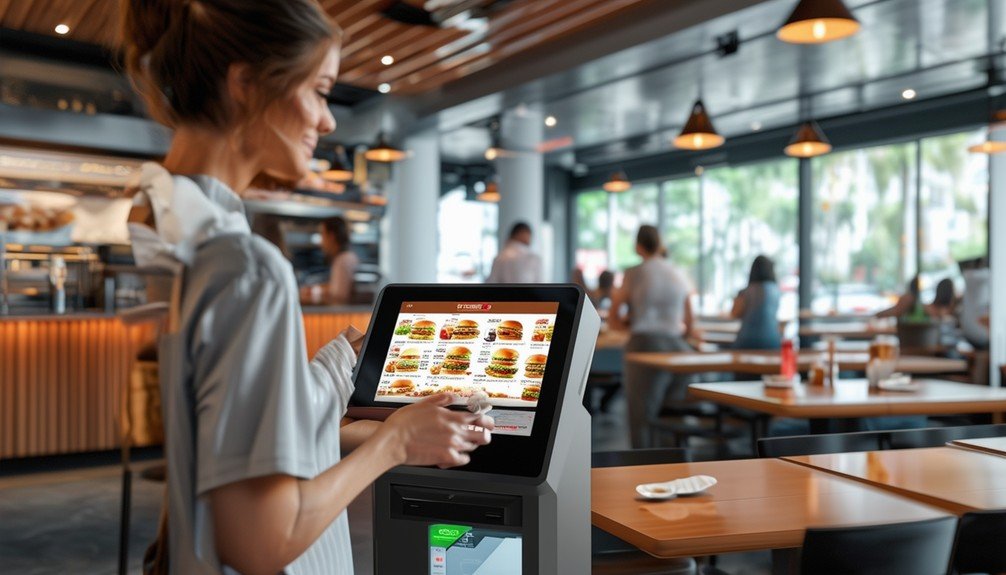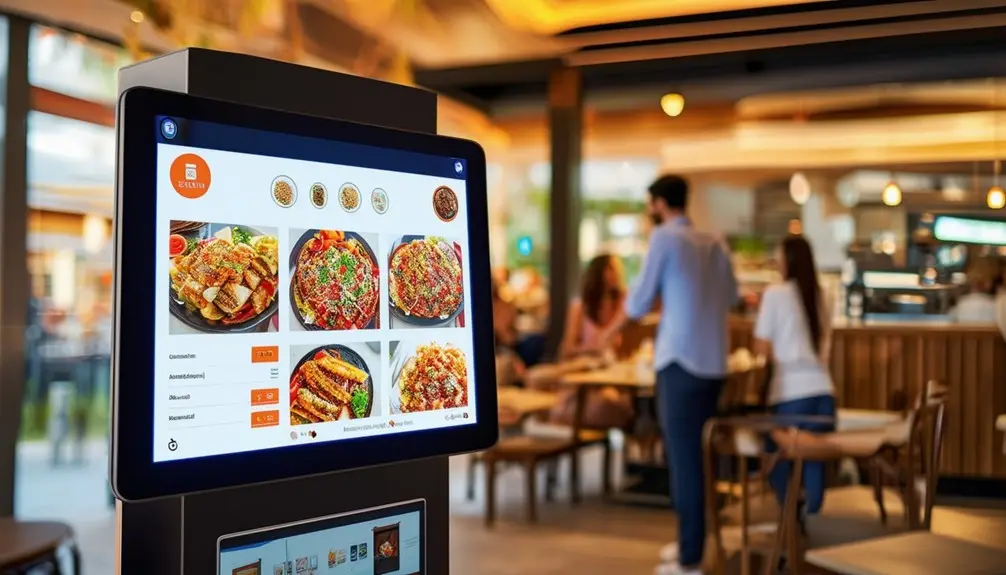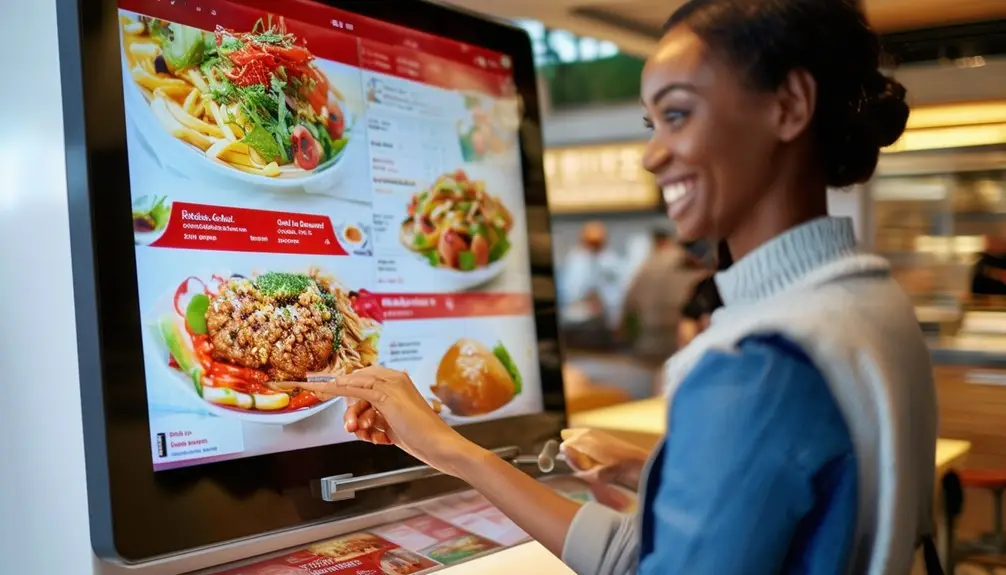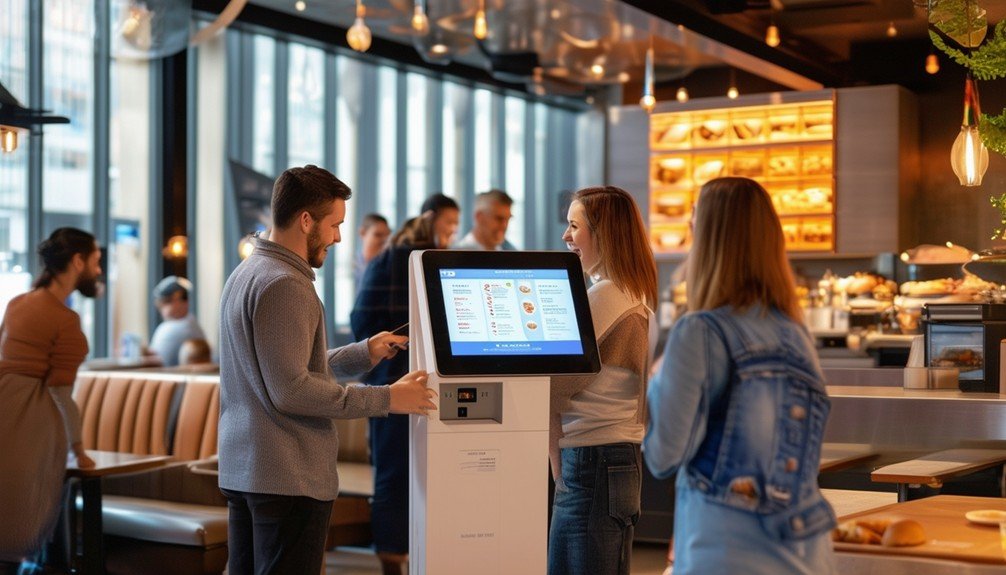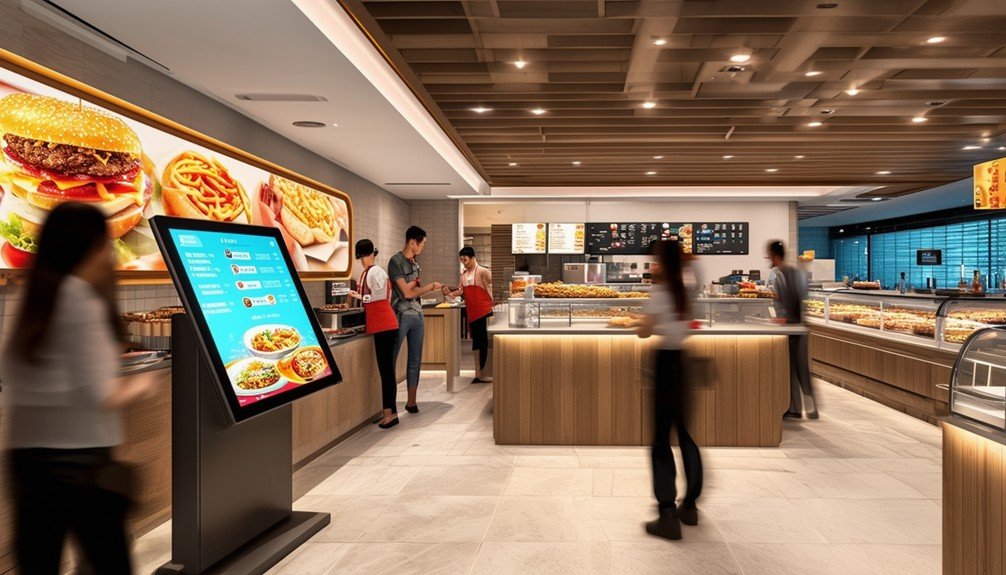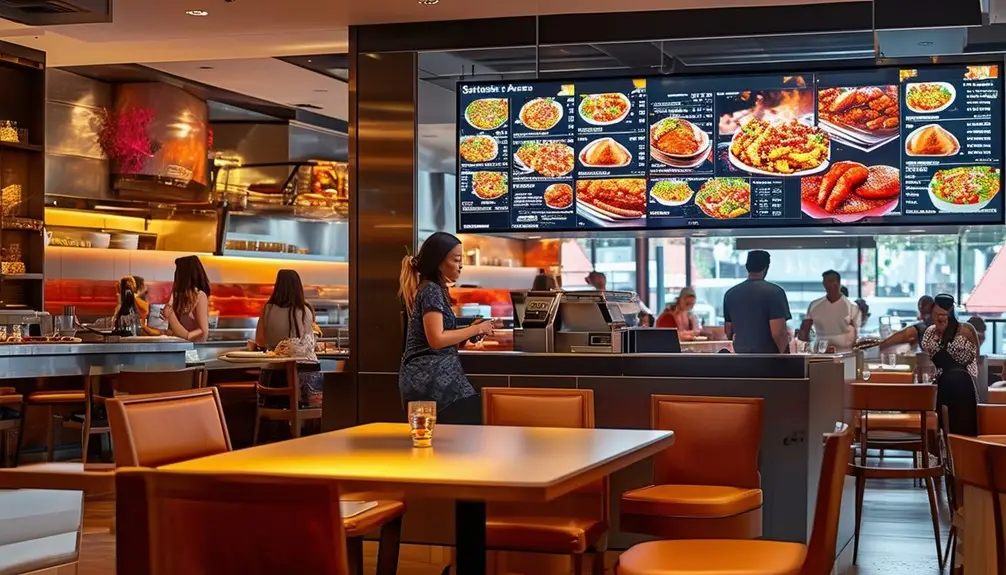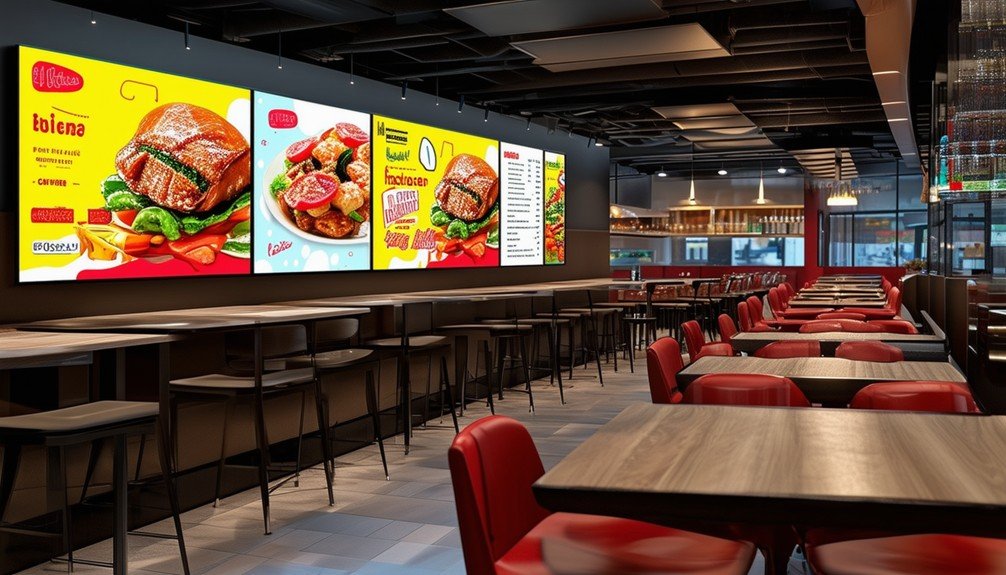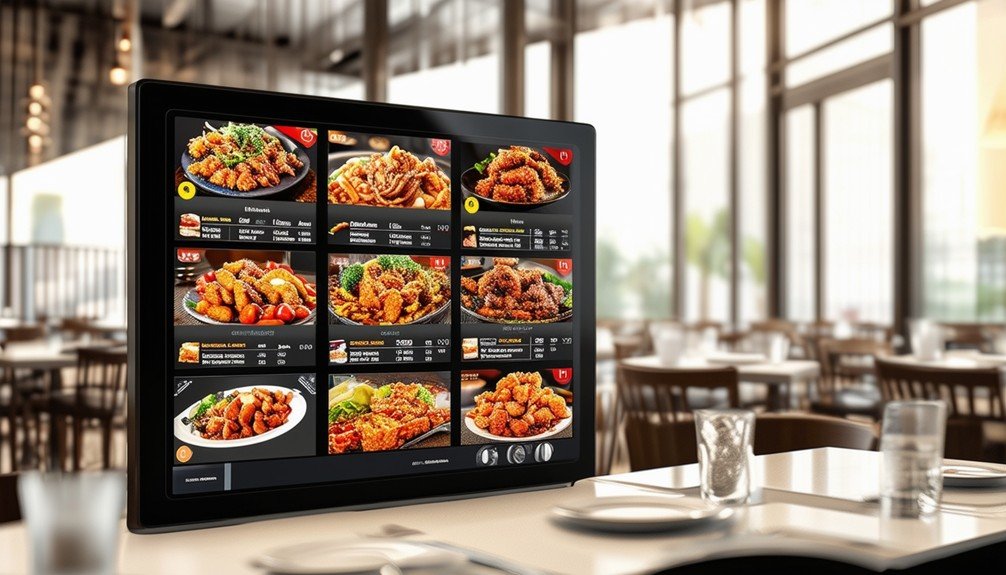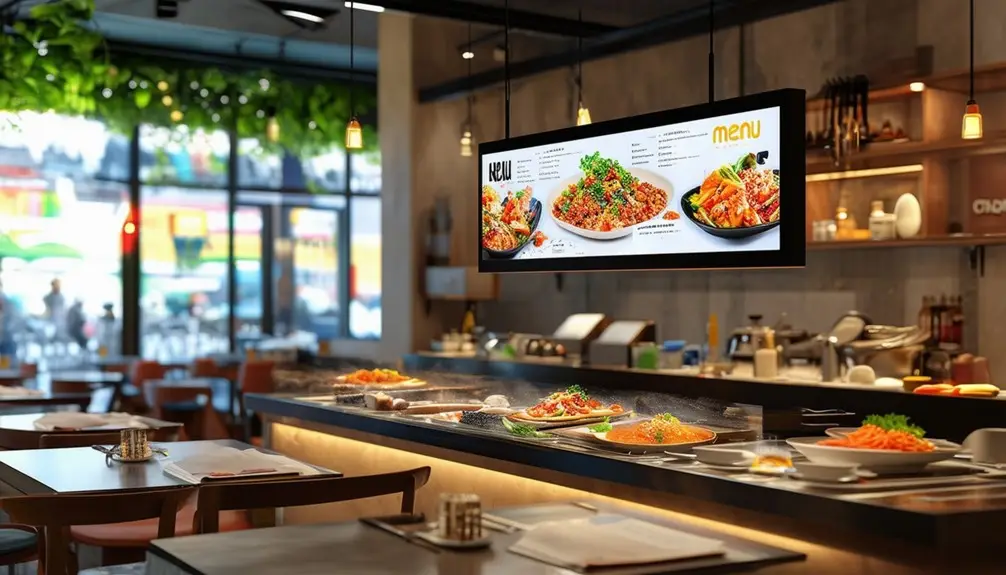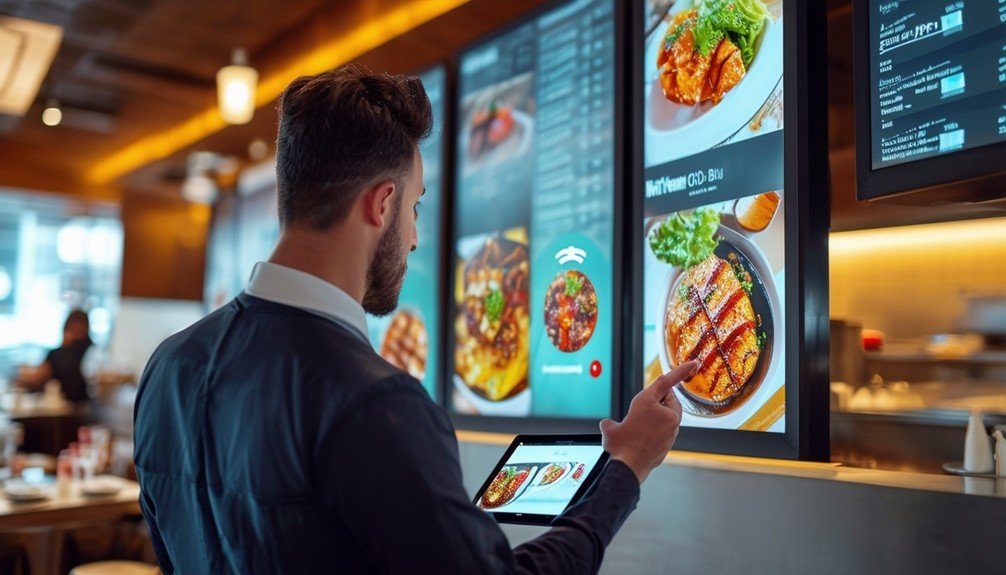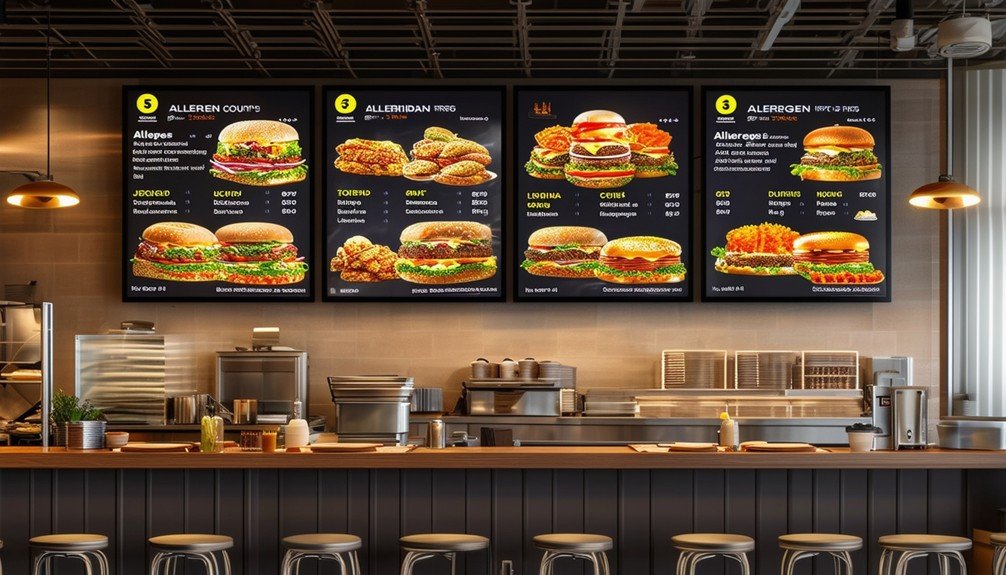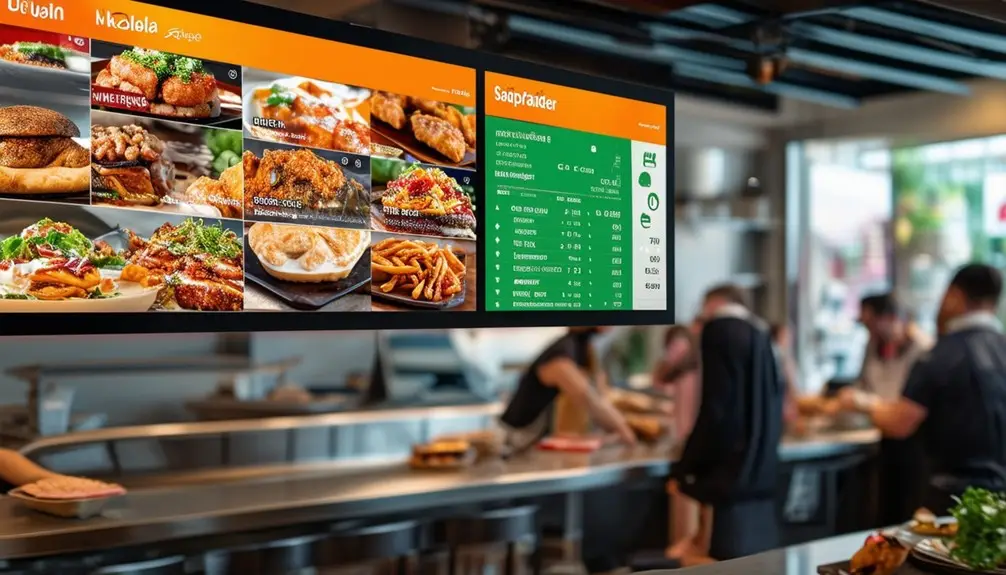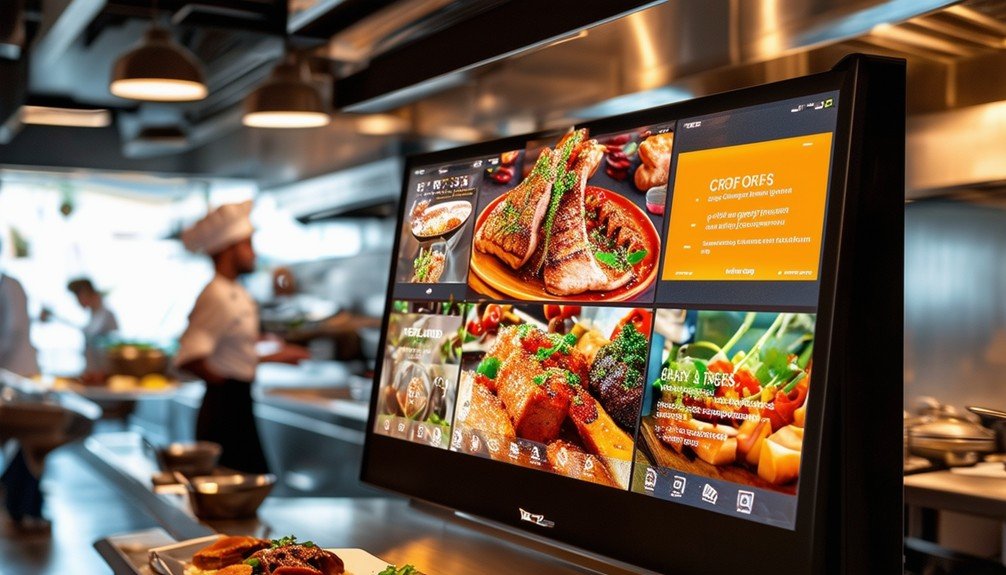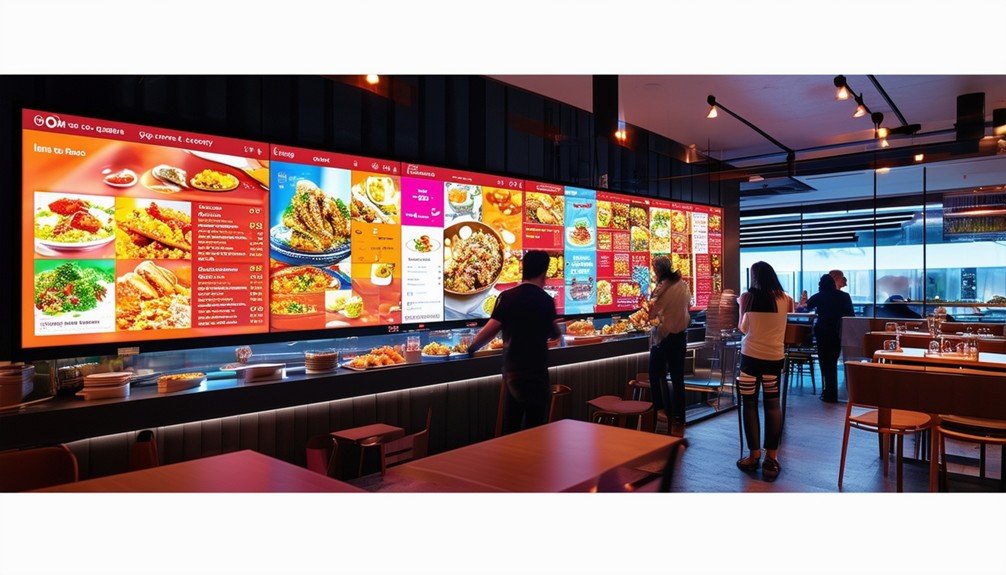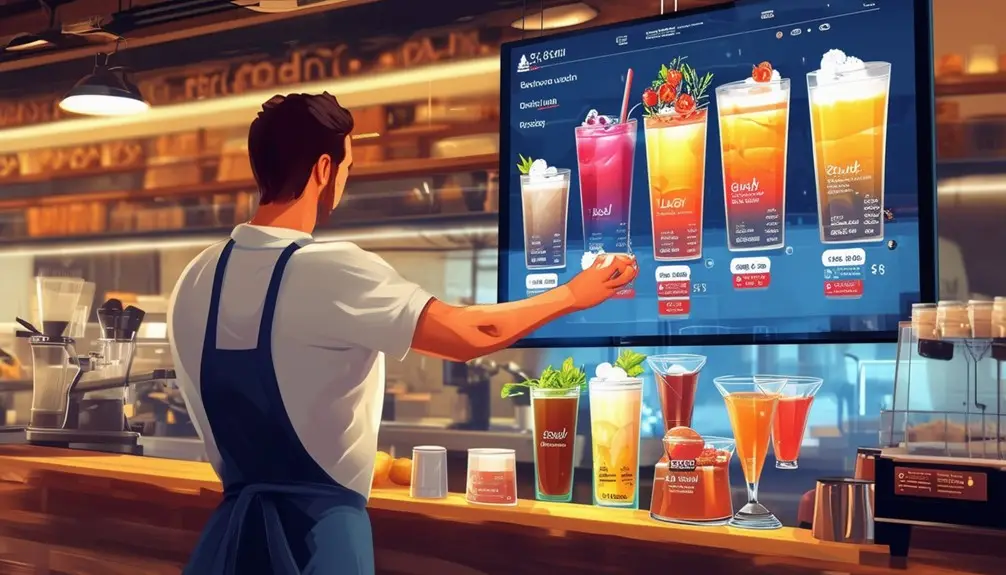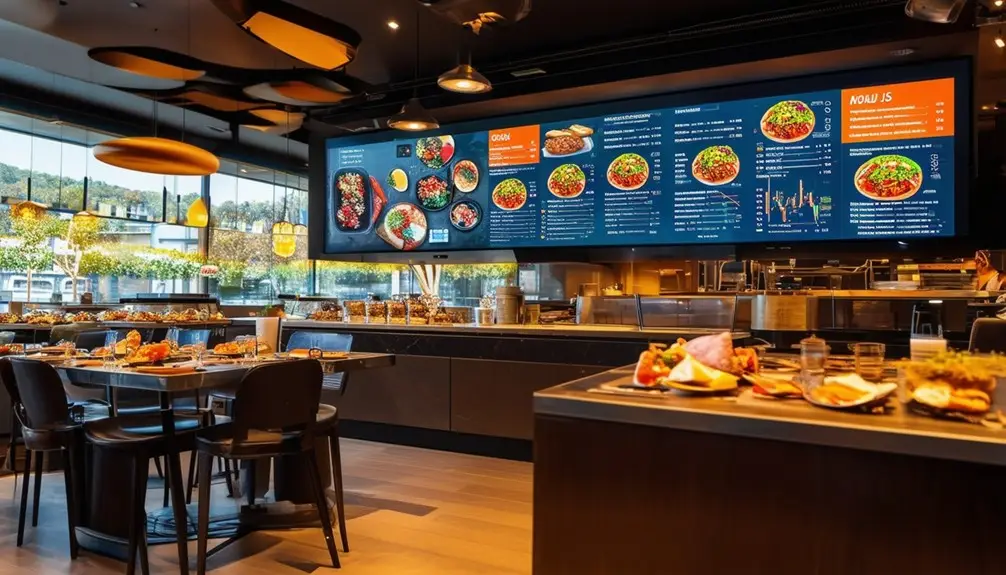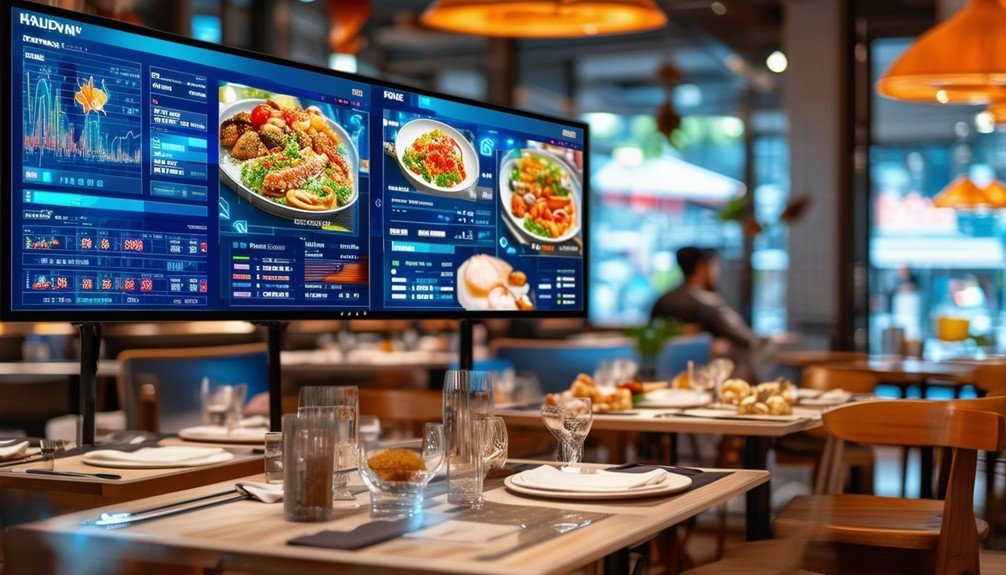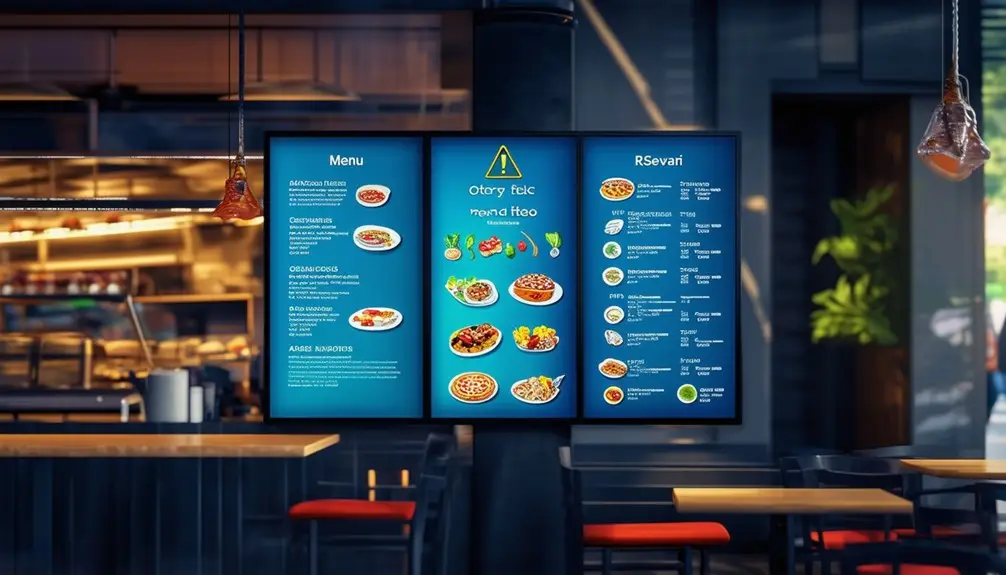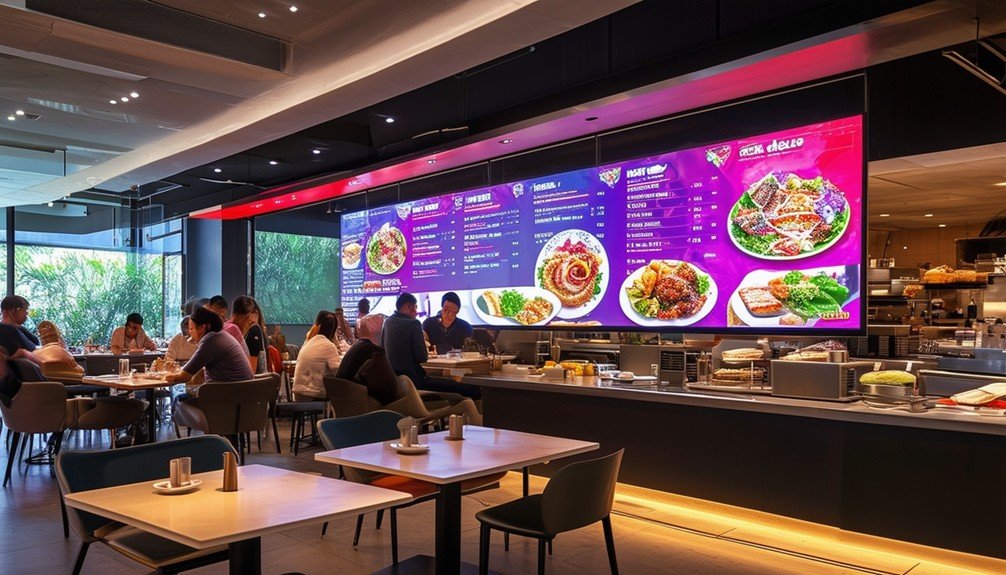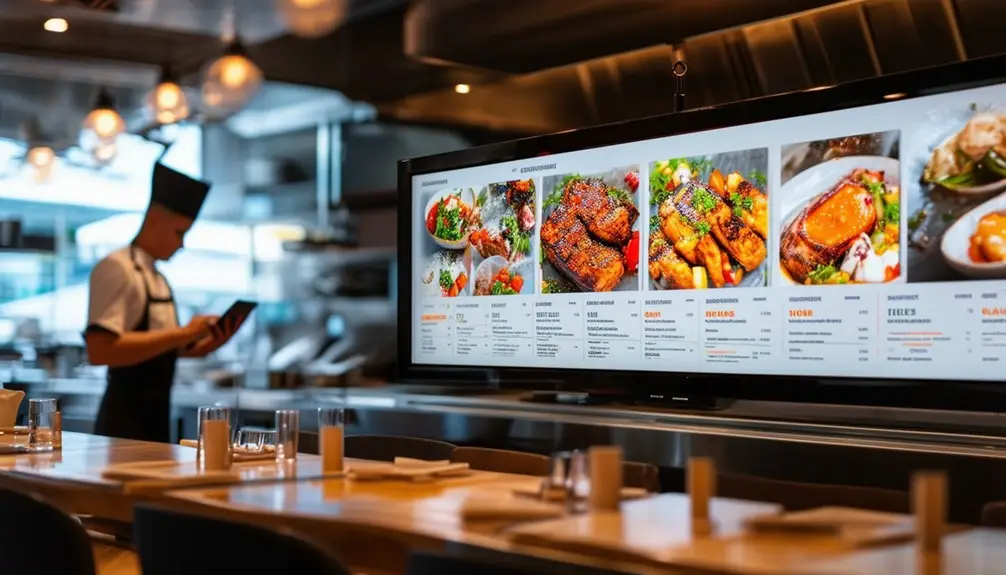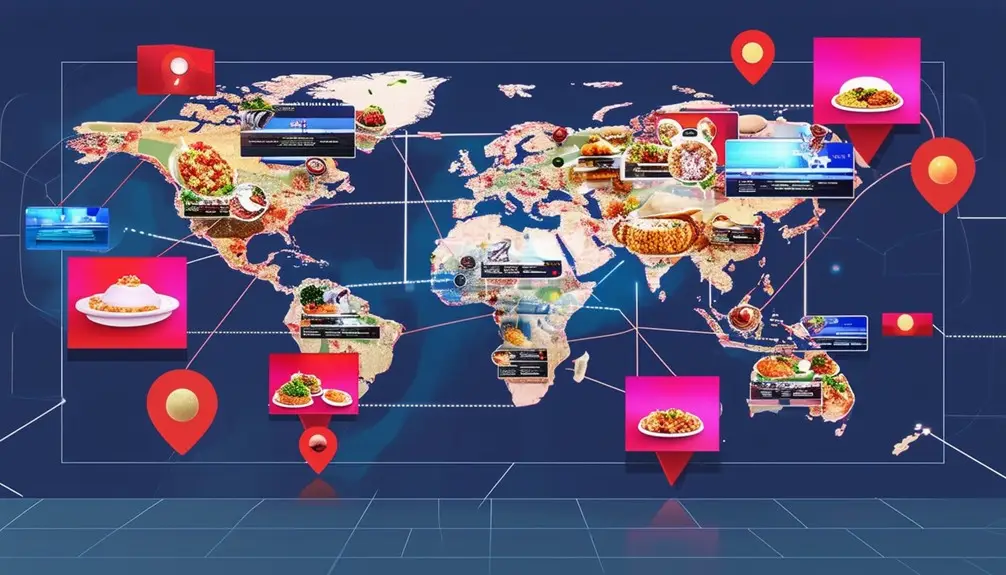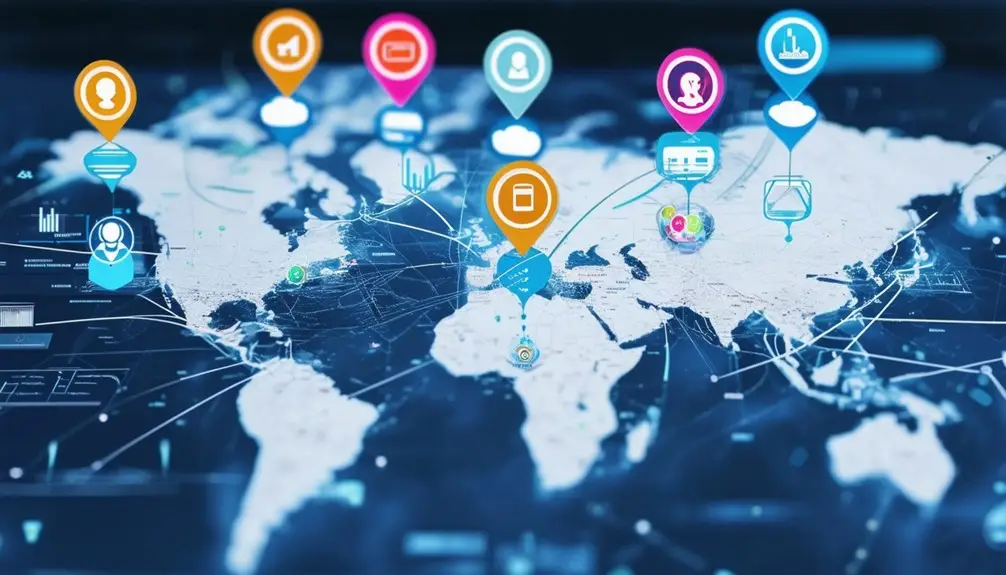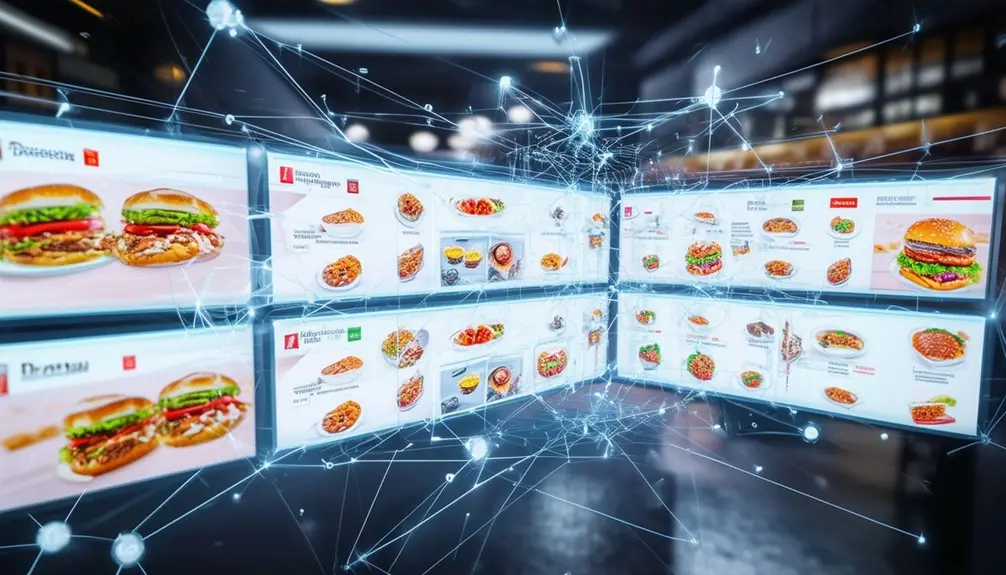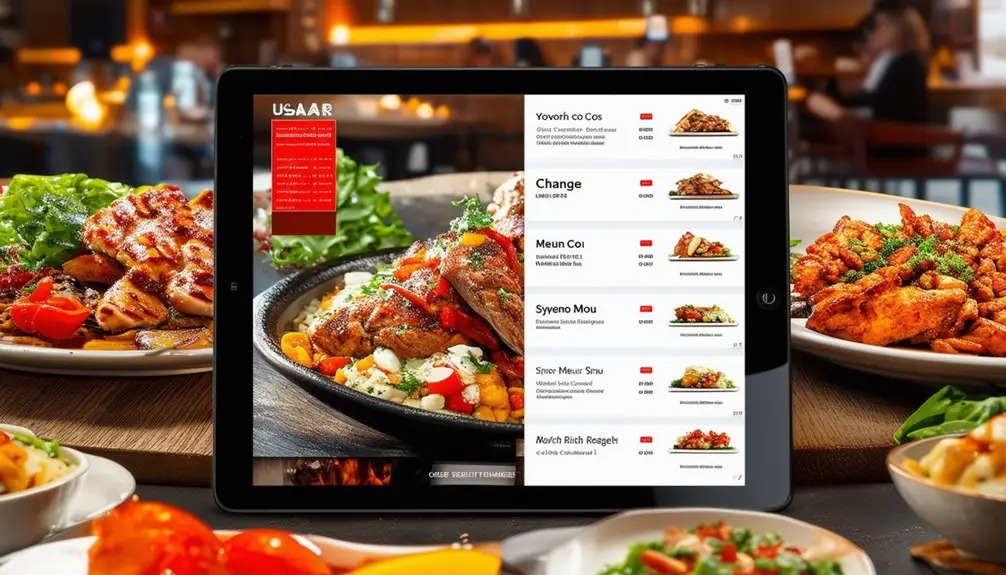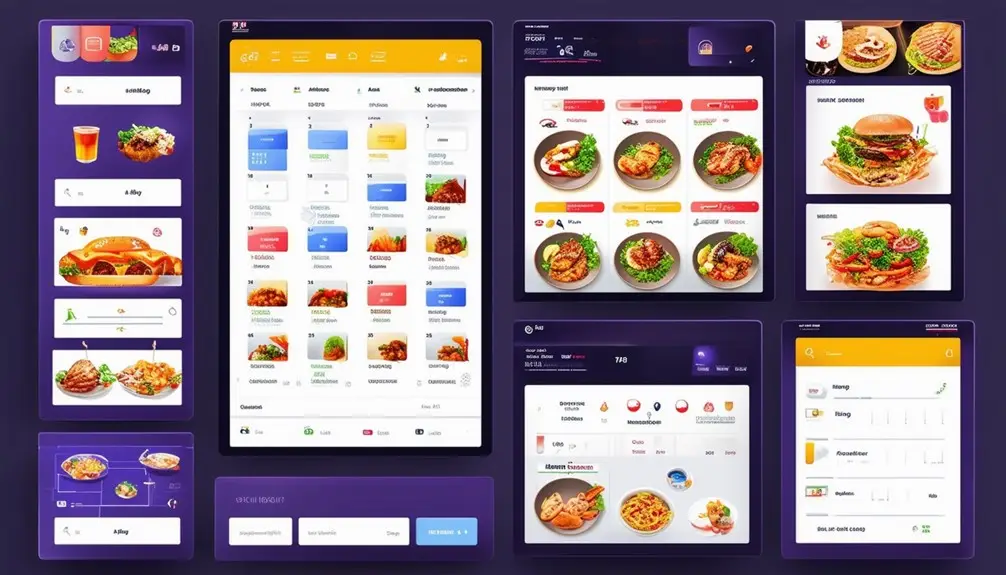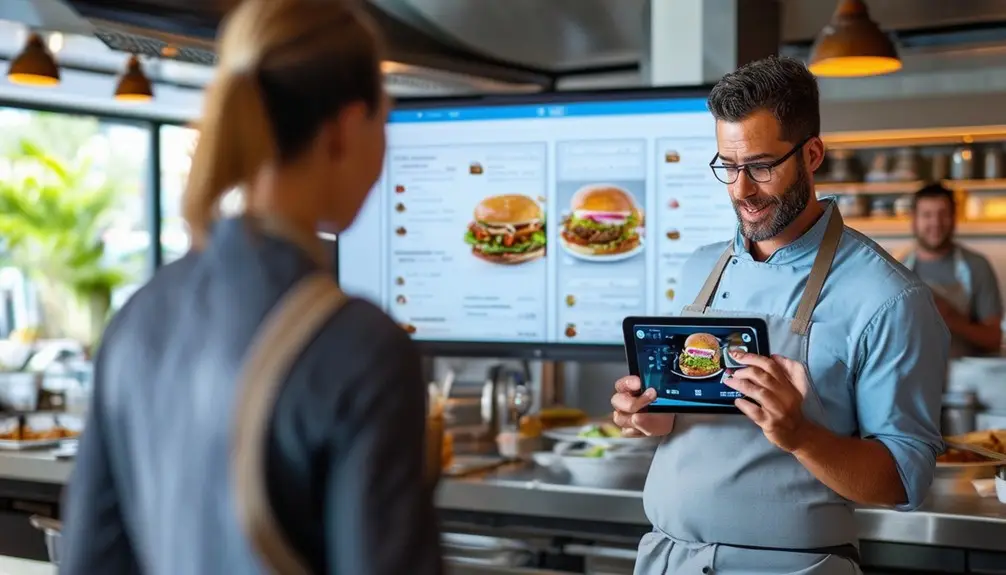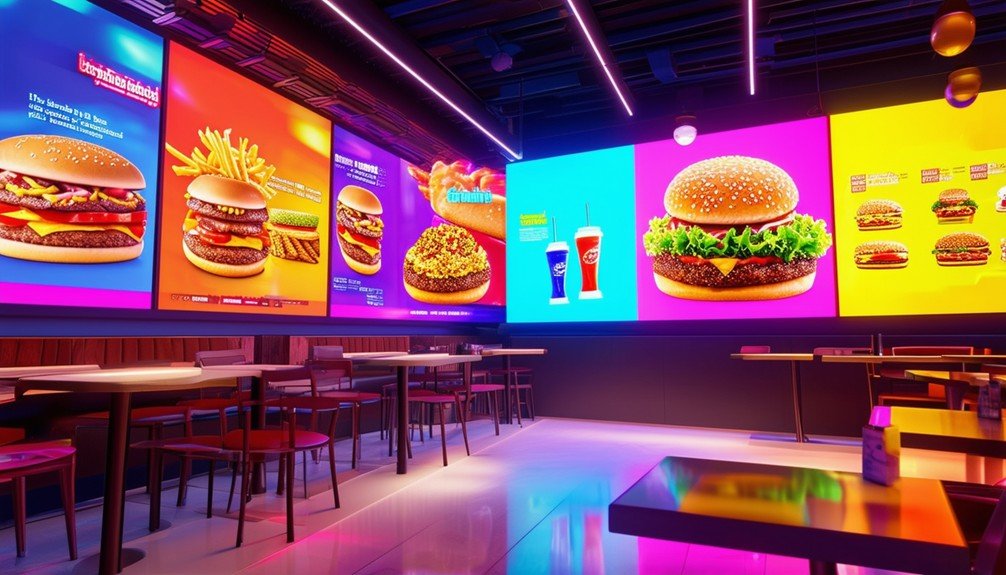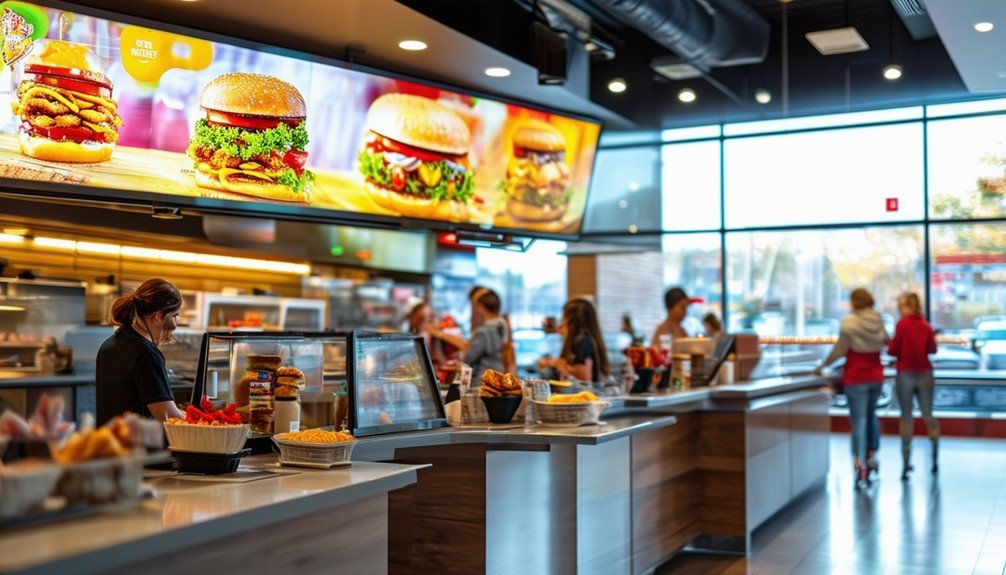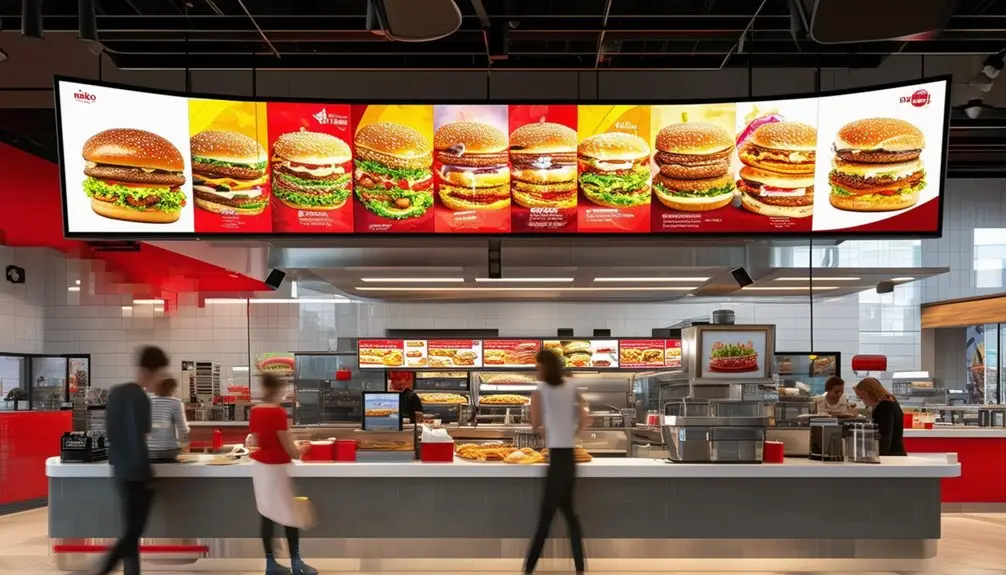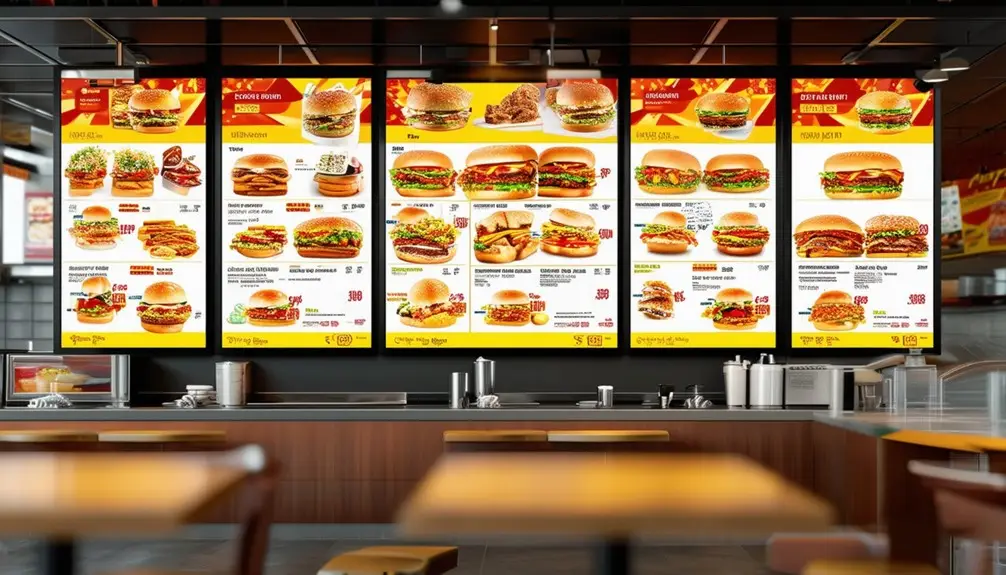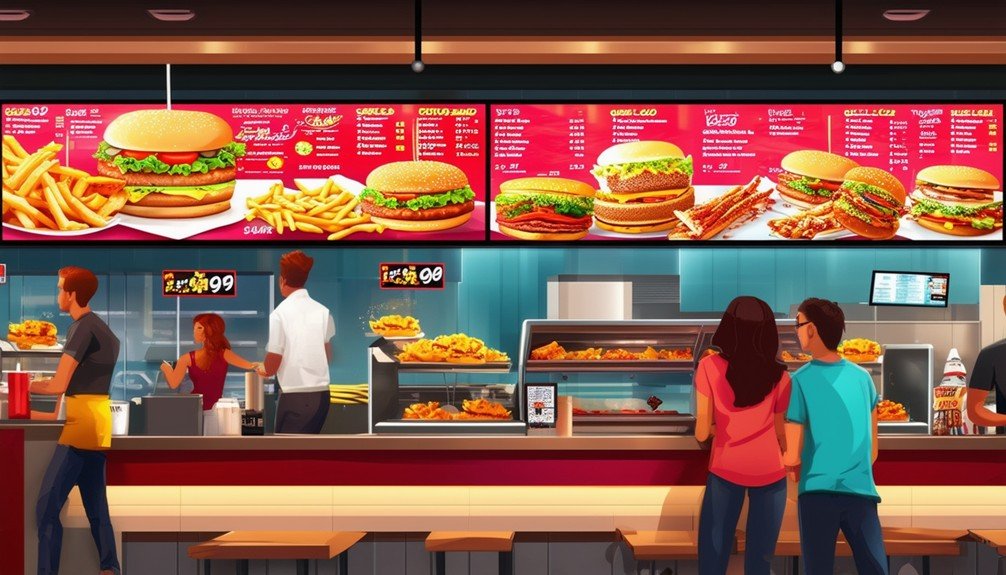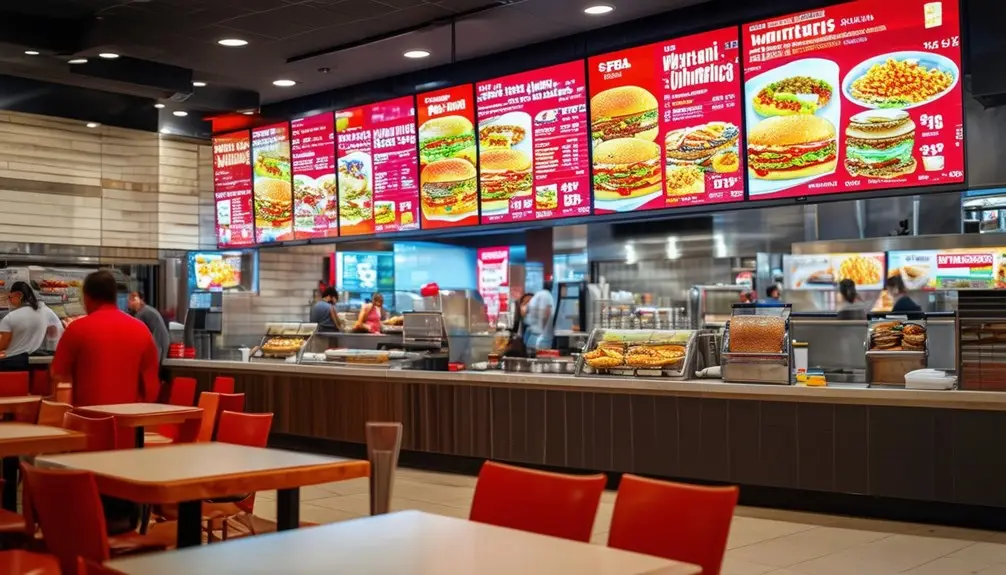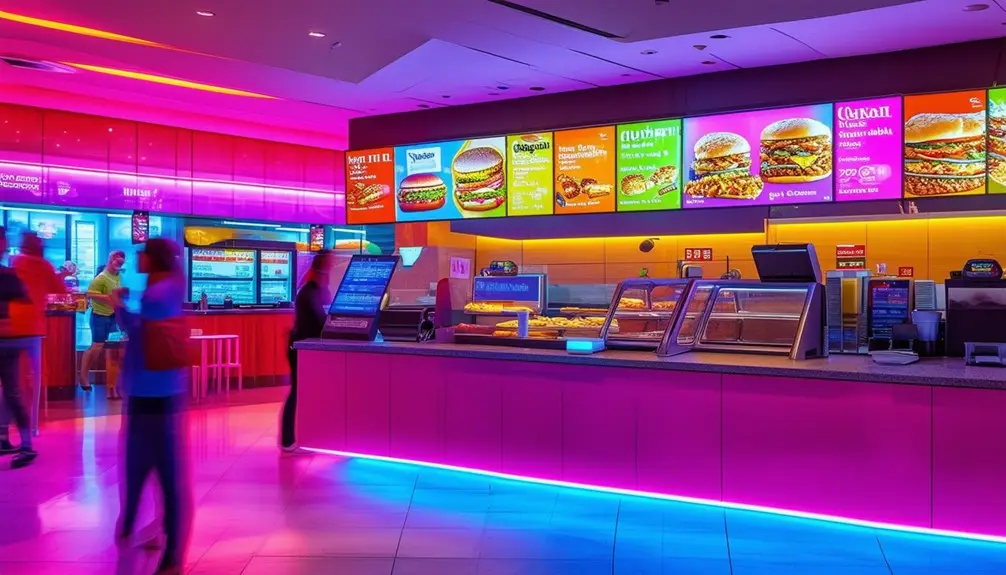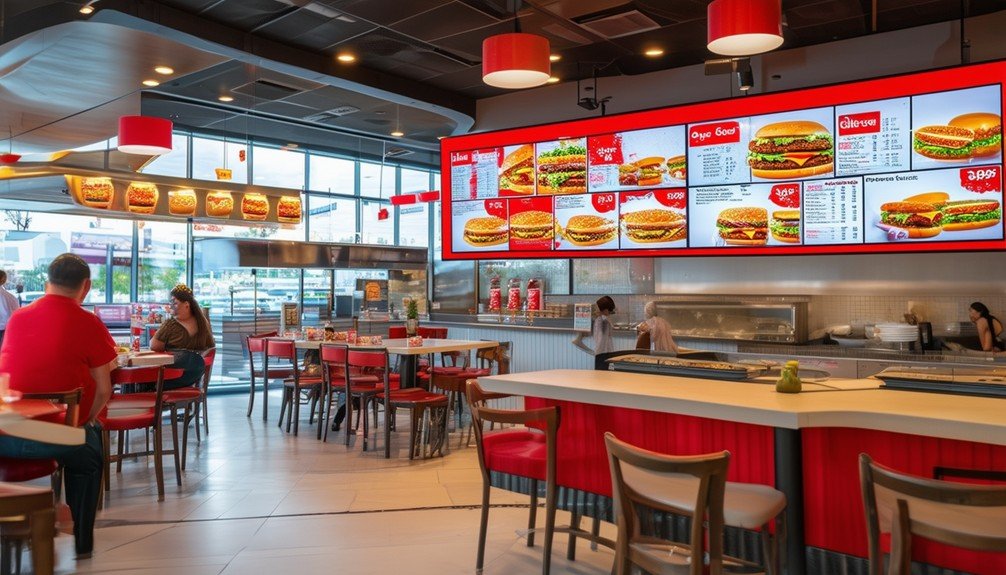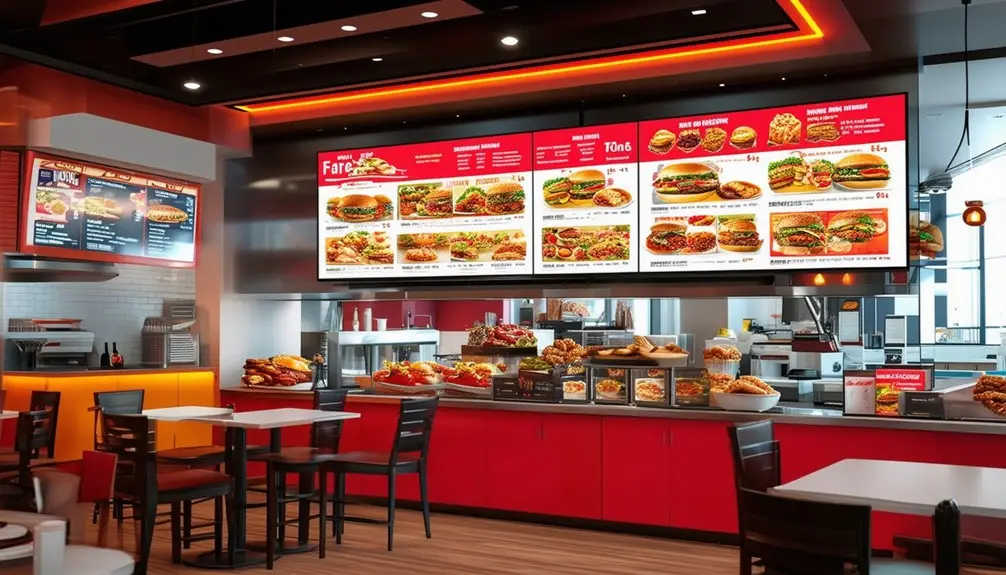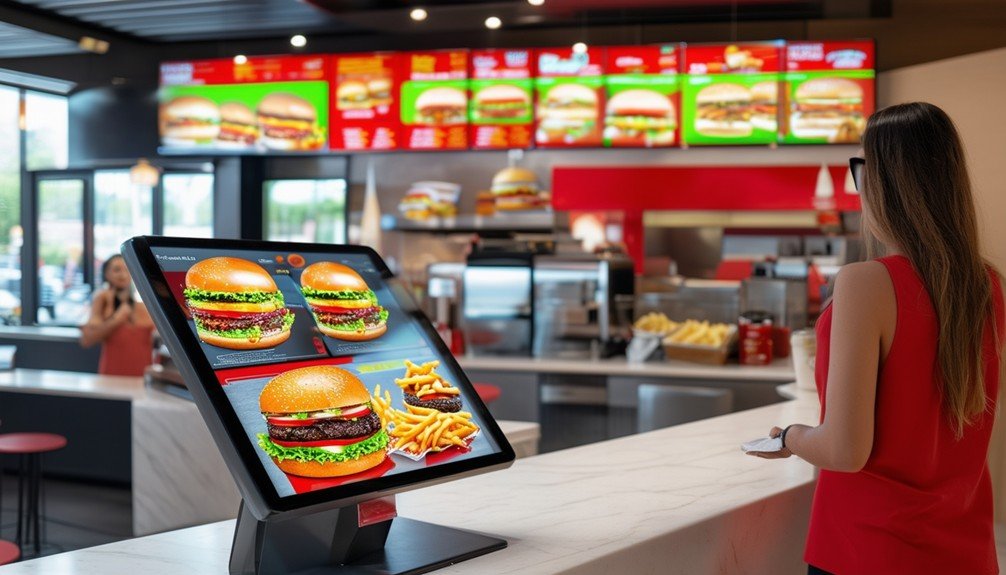Digital self-service kiosks transform food courts by boosting operational efficiency and customer satisfaction. They increase average check sizes by 20-30%, reduce labor costs, and enhance order accuracy. Key features include customizable ordering options, streamlined payment processing, and integrated loyalty programs. Kiosks enhance user experience with intuitive interfaces and quick service. With real-time order updates and seamless inventory sync, these kiosks guarantee efficient operations. Discovering how these systems revolutionize restaurant management will provide you with detailed insights into their myriad benefits.
Key Takeaways
- Enhance average check sizes by 20%-30% through upselling and promotions.
- Improve operational efficiency and reduce labor costs with automated ordering processes.
- Decrease wait times and ensure quick service with streamlined payment and order transmission systems.
- Increase customer satisfaction with customizable ordering options and user-friendly interfaces.
- Integrate loyalty programs for targeted promotions and increased customer retention.
Benefits of Self-Ordering Kiosks
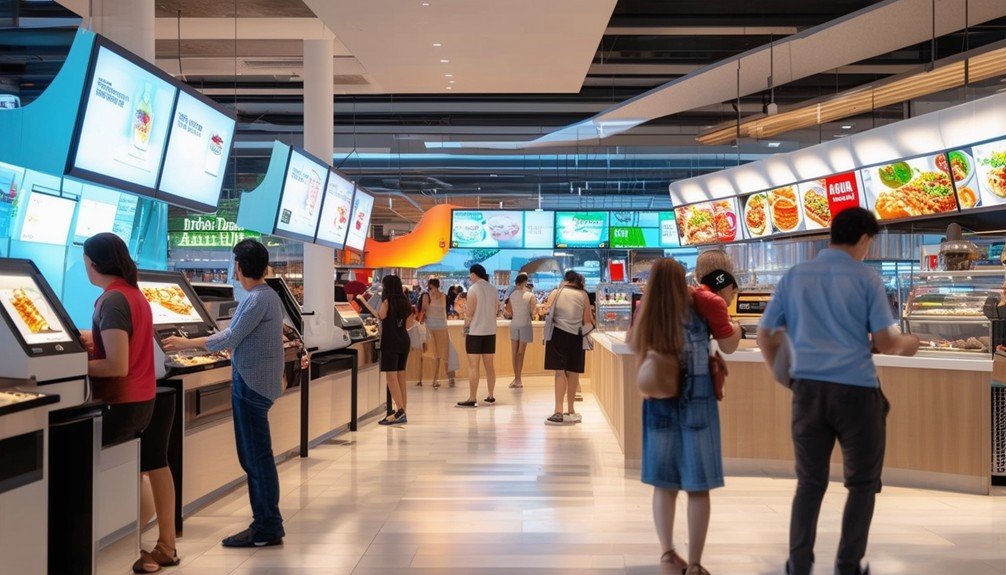
By implementing self-ordering kiosks, food courts can increase average check sizes by 20%-30% and enhance operational efficiency to a great degree. Self-ordering kiosks streamline the ordering process, allowing you to serve more customers efficiently. This reduction in wait times not only expedites the checkout process but also greatly enhances the overall customer experience.
Order accuracy is another major benefit. Human errors in taking orders can lead to dissatisfied customers and wasted resources. Self-ordering kiosks minimize these errors, ensuring that each order is precisely what the customer wants. Accurate orders mean happier customers and fewer returns, which directly contributes to increased sales.
From a financial standpoint, kiosks help reduce labor costs. By automating the ordering process, you can allocate your staff to more critical tasks that require human interaction, thereby optimizing labor resources. This cost reduction is a boon for food court operators aiming to lower overhead.
Additionally, self-ordering kiosks offer an opportunity to upsell and cross-sell more effectively. The digital interface can suggest additional items or upgrades, which can lead to a noticeable increase in average check sizes. This not only boosts sales but also enhances customer service by providing personalized recommendations.
Key Features of Kiosk Systems
When you use a digital kiosk in a food court, you’ll appreciate the customizable ordering options that let you tailor your meal exactly to your liking. These kiosks also offer streamlined payment processing, speeding up your transaction and reducing wait times. Additionally, the system’s built-in upselling and promotions guarantee you don’t miss out on any special deals or add-ons, enhancing your overall dining experience.
Customizable Ordering Options
With self-service kiosks, you can effortlessly personalize your meal by selecting add-ons and modifications tailored to your preferences, enhancing both convenience and satisfaction. These kiosks offer customizable ordering options that allow you to tailor meals with just a few taps on the screen. By skipping the traditional lines, you reduce wait times and improve overall efficiency.
Self-service kiosks streamline operations by enabling you to place your order independently, which means that front-of-house staff can focus on other tasks, increasing productivity. This efficiency not only lowers labor costs but also guarantees that your order is communicated directly to the kitchen staff, minimizing errors and enhancing your dining experience.
Data shows that customizable ordering options meet modern consumer demands for convenience and personalized service. When you use a kiosk, you’re tapping into a system designed to cater to your specific tastes and needs, ensuring a satisfying meal every time.
Streamlined Payment Processing
Beyond customizable ordering choices, self-service kiosks also streamline payment processing by accepting various payment methods, including credit/debit cards and mobile wallets. Integrating seamlessly with POS software, these kiosks securely process transactions, providing real-time sales data that optimizes business operations.
You’ll appreciate the flexibility offered by self-service kiosks. Customers can effortlessly split bills, add tips, and receive digital receipts, which enhances the convenience and transparency of the transaction process. By offering contactless payment options, these kiosks promote a safe and hygienic transaction environment, essential in today’s food court settings.
The intuitive interface of these kiosks simplifies the payment process, notably reducing wait times and enhancing overall dining experiences. This user-friendly design ensures that customers can navigate payment options with ease, making the entire dining experience more efficient and enjoyable.
With self-service kiosks, you can leverage advanced payment processing capabilities to meet diverse customer preferences. The integration with POS software ensures secure and efficient handling of payments, while features like digital receipts and contactless payment provide a modern, seamless experience. This improvement in payment processing ultimately contributes to smoother operations and more satisfied customers in food court environments.
Upselling and Promotions
Self-service kiosks leverage AI-powered upselling recommendations to boost average ticket sizes by 20%-30%, enhancing both revenue and customer engagement. By utilizing advanced algorithms, these kiosks analyze customer preferences and purchase history to offer targeted promotions and personalized offers right at the point of sale. This strategic approach guarantees that customers are presented with relevant items, increasing the likelihood of additional purchases.
Here are four key features that make these kiosks effective in upselling and promotions:
- AI-Powered Recommendations: The kiosks use artificial intelligence to suggest complementary items based on what’s in the customer’s cart, leading to higher average ticket sizes.
- Targeted Promotions: These systems can display promotions tailored to individual preferences, making the offers more appealing and effective.
- Personalized Offers: By leveraging data, kiosks can present customized deals that resonate with customers, enhancing the overall shopping experience.
- Strategic Upsell Prompts: Interactive ordering processes include timely and strategically placed upsell prompts that encourage customers to add more to their order.
Integration With Restaurant Systems
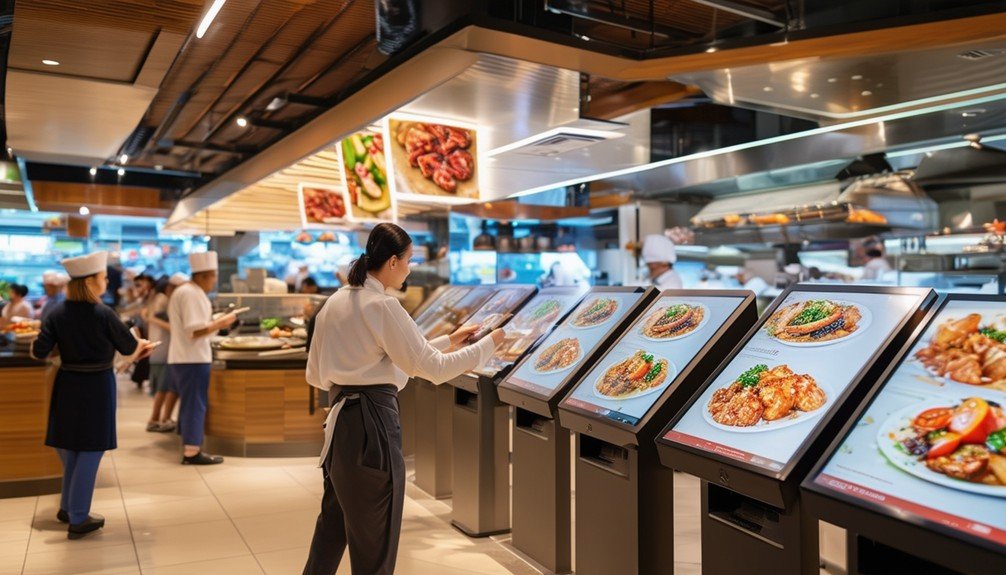
Integrating digital self-service kiosks with restaurant systems streamlines operations by ensuring smooth communication between the front and back of the house. When kiosks and restaurant systems are integrated, orders are immediately transmitted to kitchen display systems, eliminating the risk of manual errors and improving operational efficiency. You’ll appreciate how this integration guarantees that your kitchen staff receives precise order details in real-time, allowing them to focus on preparing meals without any confusion.
The integration extends to inventory management systems, allowing you to keep track of stock levels automatically. This means that any item ordered via the kiosk will instantly update your inventory, reducing the chances of running out of essential ingredients. Additionally, linking kiosks with loyalty programs enhances customer satisfaction by letting patrons earn rewards effortlessly.
Here’s a quick overview of the benefits:
| Benefit | Emotional Impact |
|---|---|
| Real-time order updates | Reduced stress for staff |
| Accurate order details | Enhanced customer trust |
| Efficient inventory sync | Peace of mind for managers |
| Loyalty program support | Increased customer loyalty |
| Fewer manual errors | Higher operational efficiency |
Why Choose Zoney Kiosks
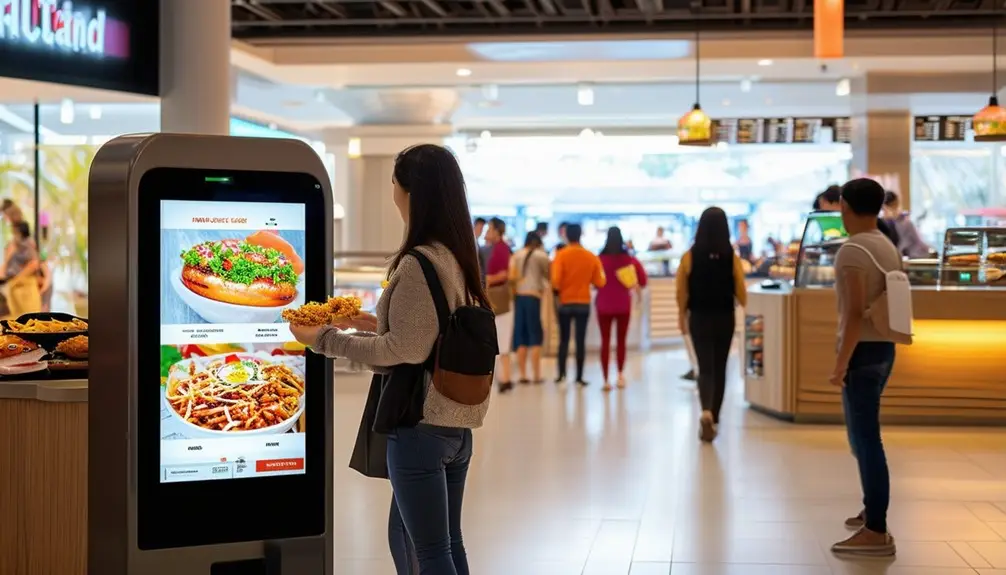
Choosing Zoney kiosks for your food court can elevate both your operational efficiency and customer satisfaction through their proven ability to increase order value by 5-10%. These kiosks are engineered to enhance customer experience while boosting your bottom line. Here’s why adopting kiosks makes sense:
- Increase Revenue: Restaurant chains like Taco Bell and McDonald’s have reported revenue increases after implementing self-service kiosks. By allowing guests to customize their orders and explore menu options, you can drive higher average ticket sizes.
- Enhance Customer Experience: Kiosks streamline the ordering process, reducing wait times and ensuring accuracy. Customers appreciate the convenience of self-service ordering, leading to improved satisfaction and repeat business.
- Reduce Labor Costs: By automating the front-of-house operations, kiosks free up your staff to focus on more complex tasks. This operational efficiency reduces the need for additional labor, translating into significant cost savings.
- Streamline Operations: Kiosks facilitate smooth and efficient operations by integrating seamlessly with your existing systems. The ability to open tabs at different bars and manage orders from a central point enhances overall workflow.
Incorporating kiosks into your food court setup can transform your business, driving both operational efficiency and customer satisfaction.
Additional Products for Optimization
To optimize your food court kiosks, consider integrating contactless payment solutions to enhance transaction speed and security. Implement a Loyalty program to boost customer retention and engagement. Additionally, streamline order management with a Kitchen Display System for improved efficiency and accuracy.
Contactless Payment Solutions
By leveraging contactless payment solutions, food courts can greatly enhance both customer safety and operational efficiency. These solutions integrate seamlessly with self-service kiosks, providing a fast, secure, and hygienic way for customers to complete their transactions. In food court settings, where speed and volume are critical, Technology reduces physical contact, thereby elevating customer satisfaction and streamlining the checkout process.
Implementing contactless payment solutions offers several key benefits:
- Increased Customer Safety: With contactless payments, you minimize the need for physical interaction, reducing the risk of spreading germs and ensuring a safer dining experience.
- Faster Transactions: Customers can simply tap their cards or mobile devices, speeding up the payment process significantly and reducing wait times.
- Enhanced Operational Efficiency: By reducing the time and labor involved in handling cash transactions, your staff can focus more on service quality and less on administrative tasks.
- Modernized Dining Experience: Offering cutting-edge payment options modernizes your food court, appealing to tech-savvy customers who expect quick and convenient solutions.
Enhanced Order Efficiency
Enhancing order efficiency in food courts involves integrating advanced tools like Kitchen Display Systems (KDS) and digital contactless menus to streamline operations and boost customer satisfaction. By implementing a KDS, you can make sure that orders from digital kiosks are seamlessly transmitted to the kitchen, reducing human error and speeding up preparation times. This system also allows for real-time updates, which helps kitchen staff prioritize tasks and manage their workflow more effectively.
Digital contactless menus are another essential component. They provide a seamless ordering experience by allowing customers to browse, customize, and place orders directly from their smartphones. This not only improves customer convenience but also minimizes the need for physical interaction, which is particularly significant in today’s health-conscious environment.
Exploring diverse hardware options for your digital kiosks can further optimize restaurant operations. High-quality touchscreens, reliable internet connections, and user-friendly interfaces contribute to faster and more accurate orders. Additionally, integrating tools for contactless payments can speed up transactions, reducing wait times and improving overall efficiency.
Loyalty Program Integration
How can integrating loyalty programs with digital self-service kiosks elevate customer retention and drive revenue growth? By leveraging loyalty program integration, you can offer rewards and incentives that keep customers coming back. Studies show a 20% increase in customer retention and sales for businesses with integrated loyalty programs. Here’s how you can optimize this strategy:
- Rewards and Incentives: Use the kiosks to offer exclusive discounts and promotions. Customers earn points for each purchase, encouraging repeat visits and boosting revenue.
- Data Collection: Digital kiosks collect valuable data on customer preferences and behaviors. This information helps tailor marketing efforts and improve product offerings.
- Customer Engagement: Seamless integration enhances customer engagement by providing a smooth and satisfying user experience. Happy customers are more likely to return and recommend your services.
- Targeted Promotions: Utilize the data gathered to create targeted promotions. Personalized offers based on past behaviors can significantly increase the likelihood of repeat business.
Customer Testimonials
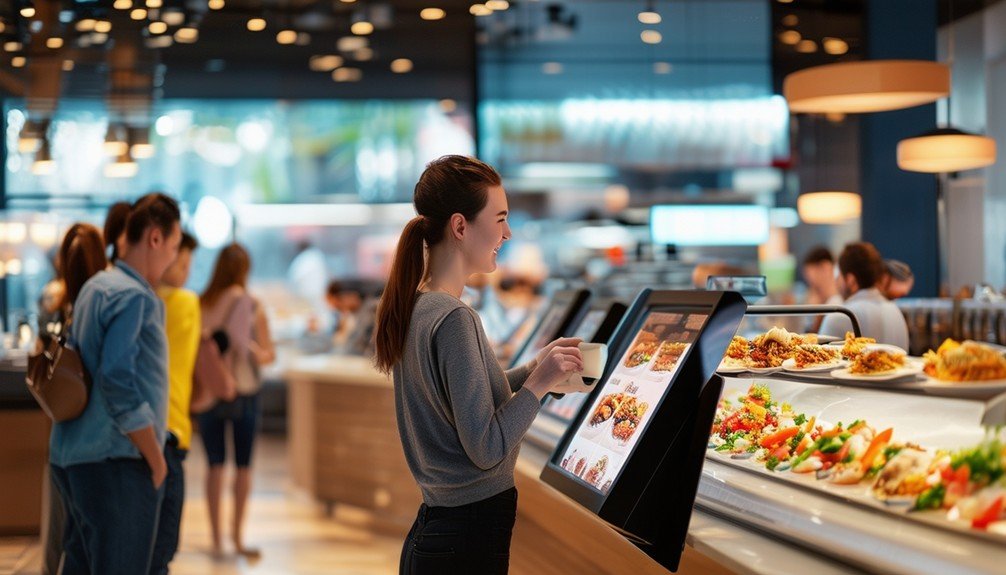
Many customers rave about the convenience and speed of ordering through self-service kiosks in food courts. Customer testimonials consistently highlight several key benefits that enhance their ordering experience.
First, the accuracy and customization options available on self-service kiosks are highly praised. Users can tailor their orders precisely to their preferences, ensuring satisfaction with every meal. Additionally, the seamless payment process and interactive menu displays enhance the overall convenience, making transactions quick and straightforward.
Thirdly, reduced wait times are a significant advantage noted by many customers. The efficient order processing of self-service kiosks means you can enjoy your meal faster, without the frustration of long lines. Lastly, the user-friendly interface of these kiosks contributes to an improved dining experience, as it simplifies the ordering process even for those less tech-savvy.
Here are the key points from customer testimonials:
- Accuracy and Customization: Enhanced control over your order details.
- Seamless Payment Process: Quick and hassle-free transactions.
- Reduced Wait Times: Faster service and less time spent waiting.
- User-Friendly Interface: Easy navigation for a better dining experience.
These positive customer testimonials underline the significant benefits of self-service kiosks in food courts.
Case Study: Taco Bell
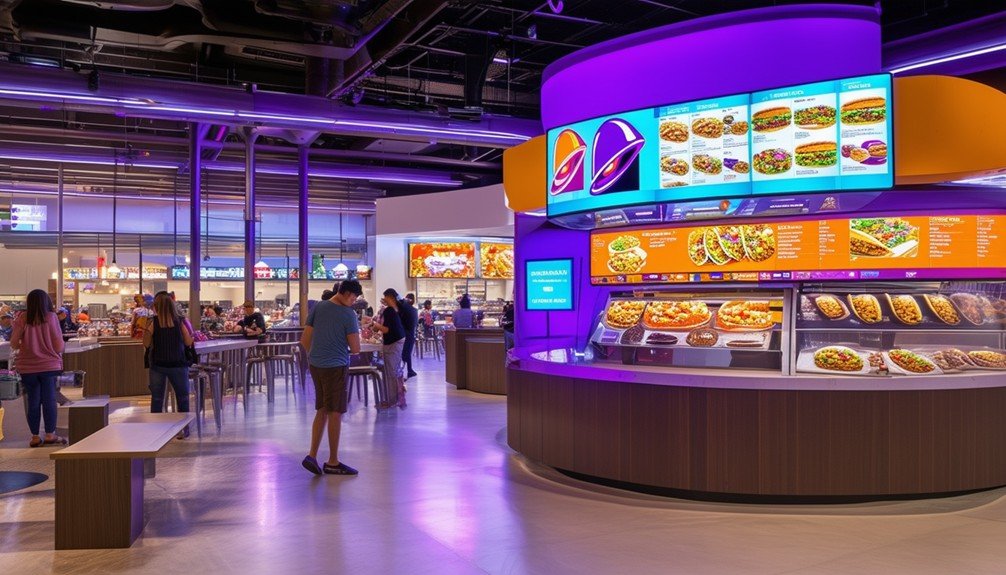
In a bid to revolutionize customer experience and operational efficiency, Taco Bell has deployed self-service ordering kiosks in over 6,500 locations. These restaurant kiosk systems automate the ordering process, enabling you to customize your meal exactly how you want it. The self-ordering kiosks not only speed up service but also cater to customer preferences, offering a fun, interactive experience.
To further enhance customer satisfaction, Taco Bell redesigned the kiosk app, making it more user-friendly and efficient. This digital transformation underscores Taco Bell’s commitment to modernizing the ordering process and improving customer interactions.
| Feature | Benefit | Outcome |
|---|---|---|
| Customization Options | Tailored Meals | Customer Satisfaction |
| User-friendly Navigation | Easy to Use | Improved Experience |
| Automated Ordering Process | Quick Service | Operational Efficiency |
Future of Self-Ordering Kiosks
Given the increasing demand for streamlined operations and enhanced customer experiences, the future of self-ordering kiosks in food courts looks exceptionally promising. The post-pandemic world has accelerated the adoption of digital solutions, making efficiency and convenience paramount in the food court industry. Self-ordering kiosks are not only meeting these demands but also setting new standards.
You can expect the following trends to shape the future:
- Higher Efficiency: Self-ordering kiosks minimize wait times and reduce human error, leading to faster service and higher customer satisfaction.
- Enhanced Convenience: Customers appreciate the ease of customizing orders and making payments directly at the kiosk, making the dining experience smoother.
- Streamlined Operations: By automating the ordering process, food courts can allocate staff to other critical tasks, improving overall operational efficiency.
- Data-Driven Insights: These kiosks collect valuable data on customer preferences and peak times, helping businesses make informed decisions and optimize their offerings.
Despite the initial investment, the anticipated popularity and ongoing trends indicate that self-ordering kiosks will continue to grow in usage. The food court industry must embrace these digital advancements to stay competitive and meet evolving customer expectations.
Conclusion
To sum up, embracing digital self-service kiosks can revolutionize your food court operations. Did you know that restaurants using kiosks have seen a 20% increase in order sizes? This boost highlights the efficiency and profitability of integrating these systems. By choosing solutions you’re not just upgrading your tech—you’re optimizing customer experience and operational workflow. The future of self-ordering kiosks looks promising, making now the perfect time to invest.
Frequently Asked Questions
What Is a Food Service Kiosk?
A food service kiosk is a self-service machine where you can browse menus, customize orders, and pay directly. It streamlines ordering, reduces wait times, and improves accuracy, enhancing both customer satisfaction and operational efficiency in food courts.
What Is an Example of a Self-Service Kiosk?
A prime example of a self-service kiosk is Taco Bell’s interactive ordering system. You’ll find it enhances your dining experience by letting you customize your order, explore menu options, and pay efficiently, embodying modern digital transformation.

